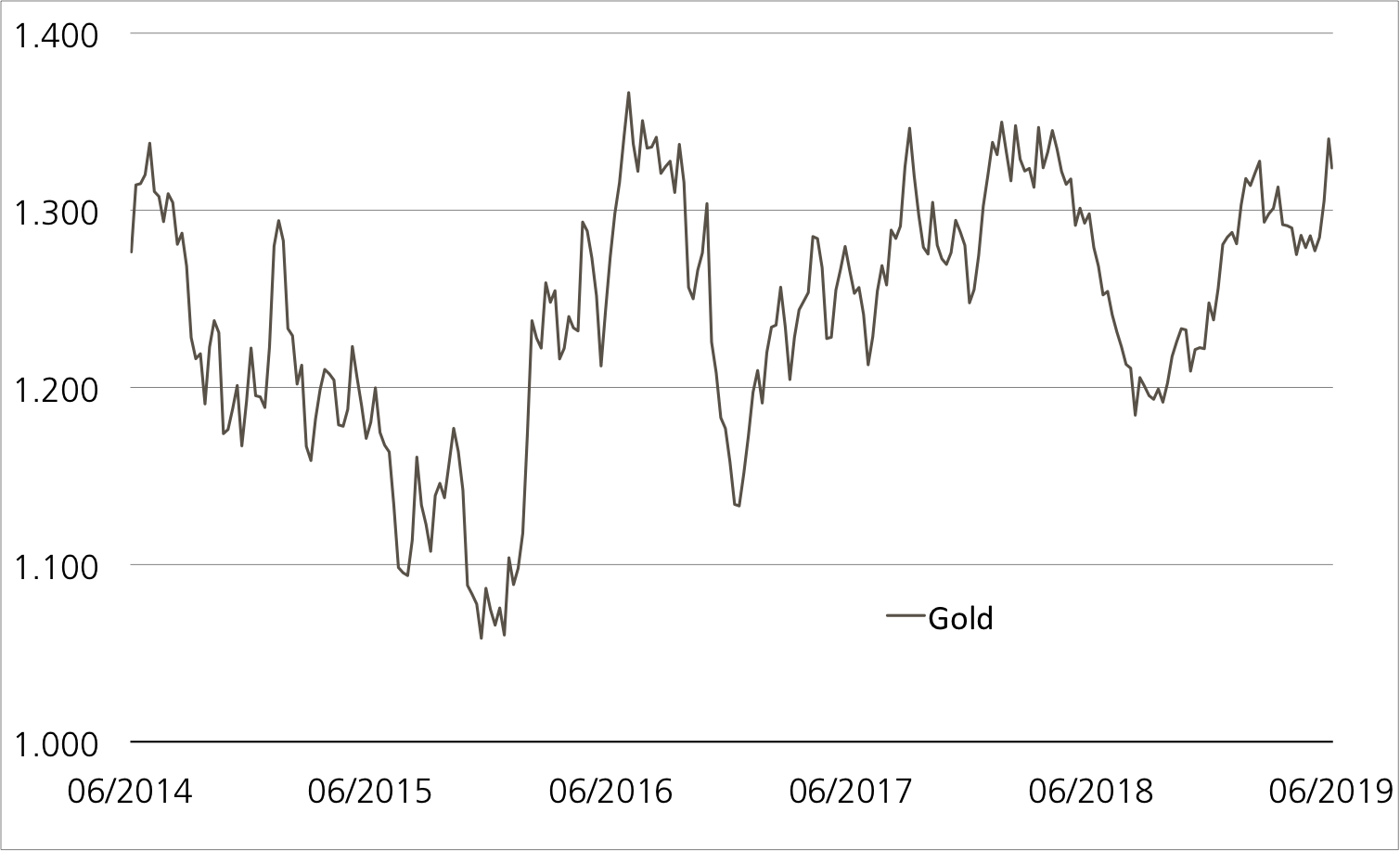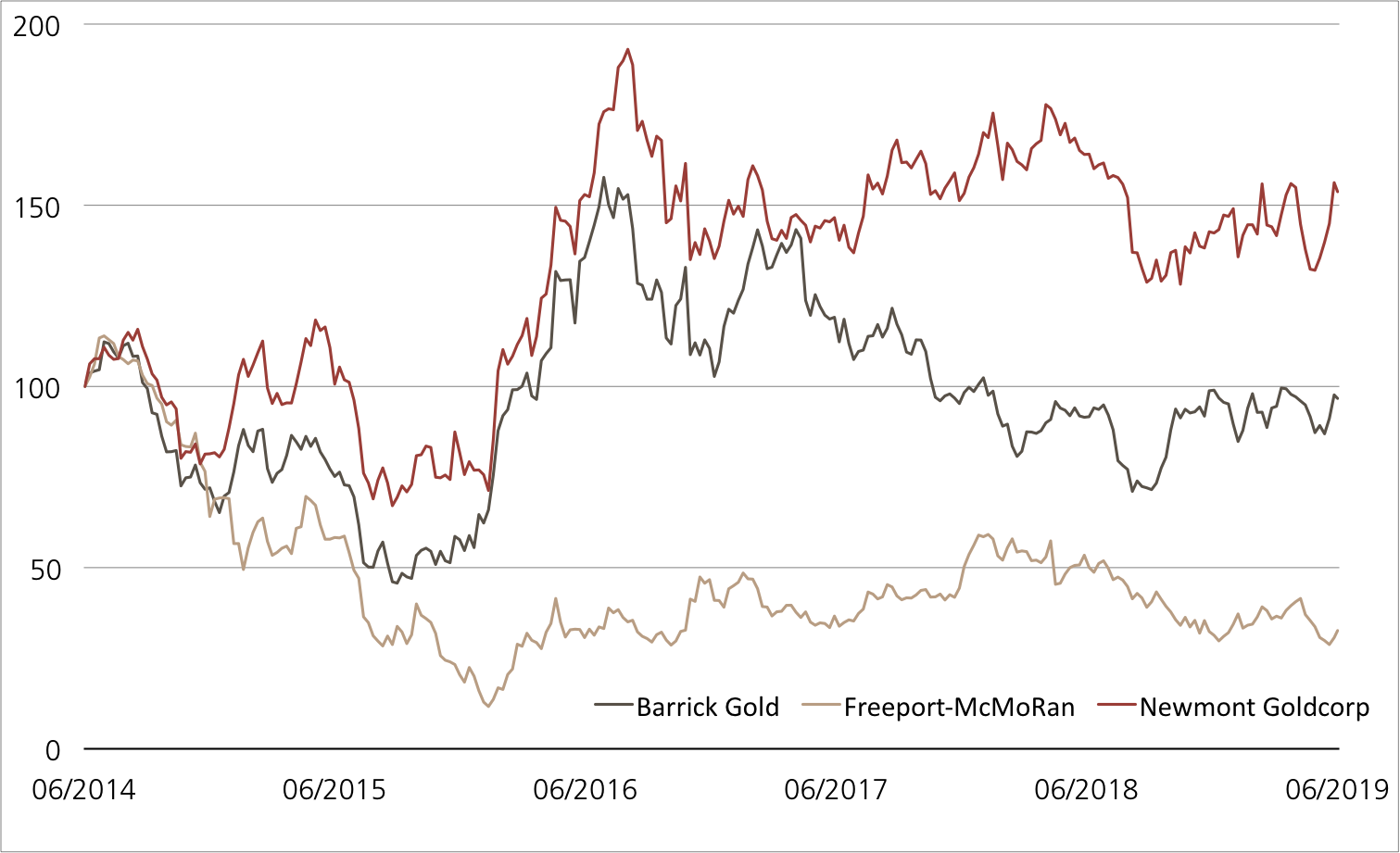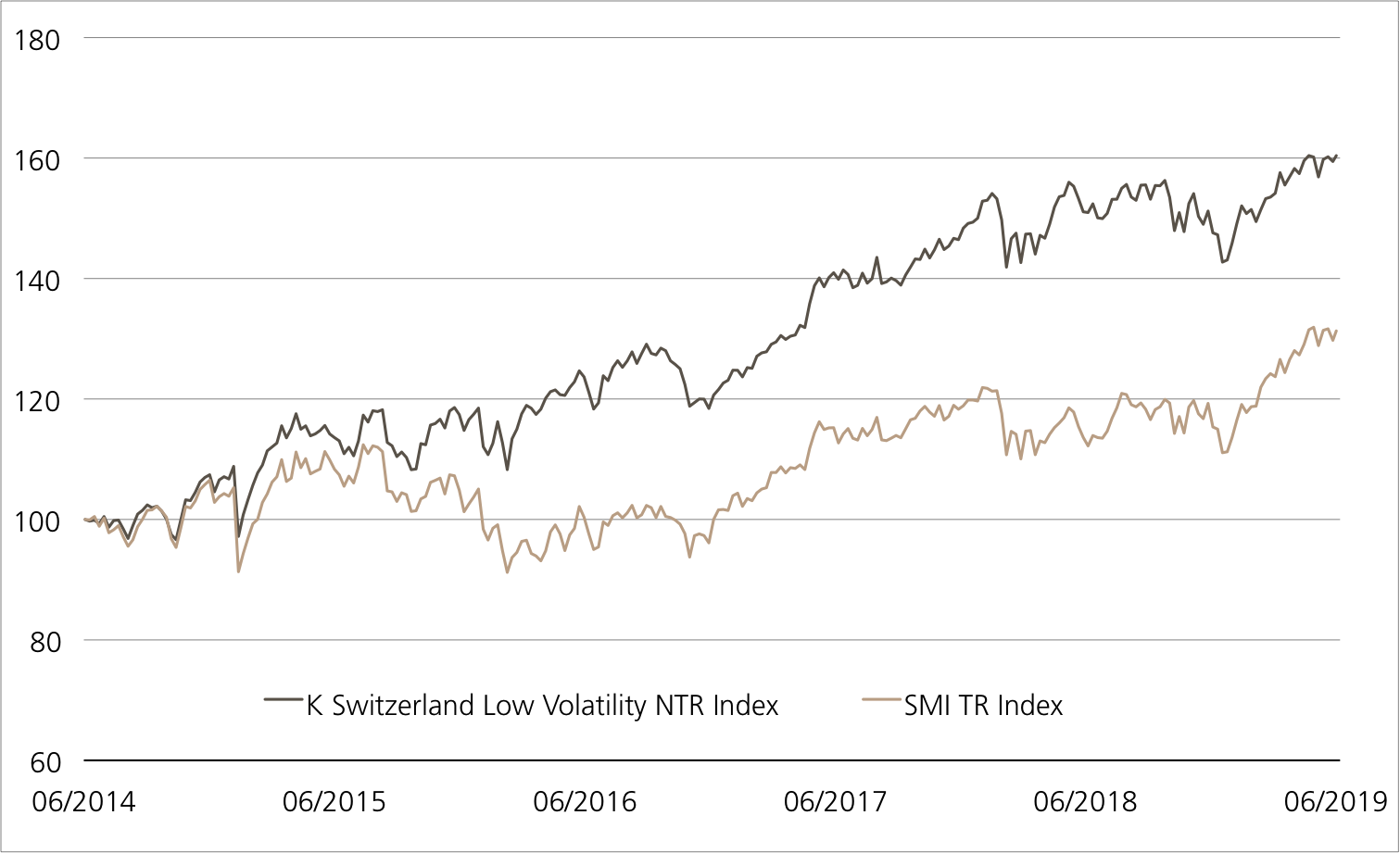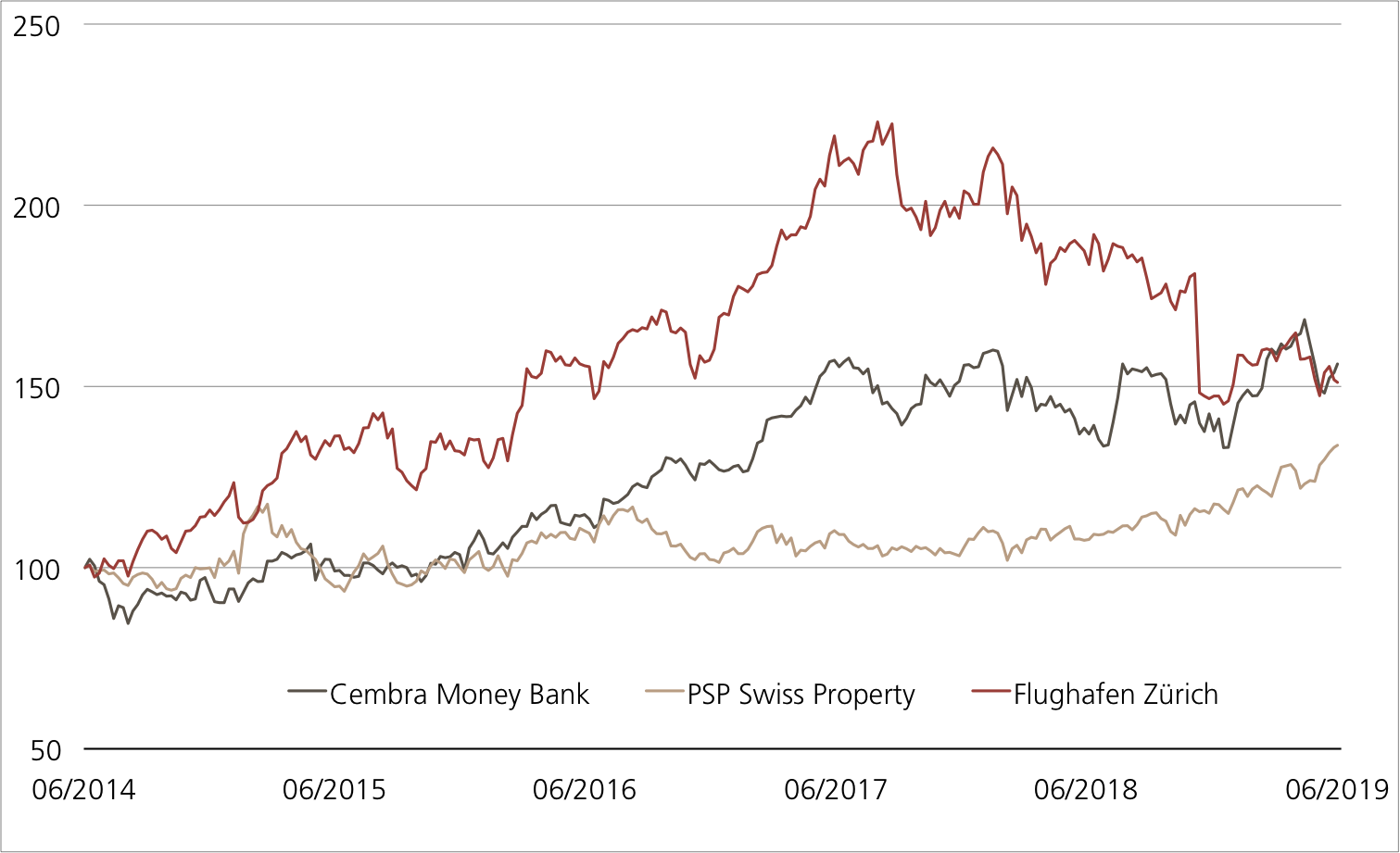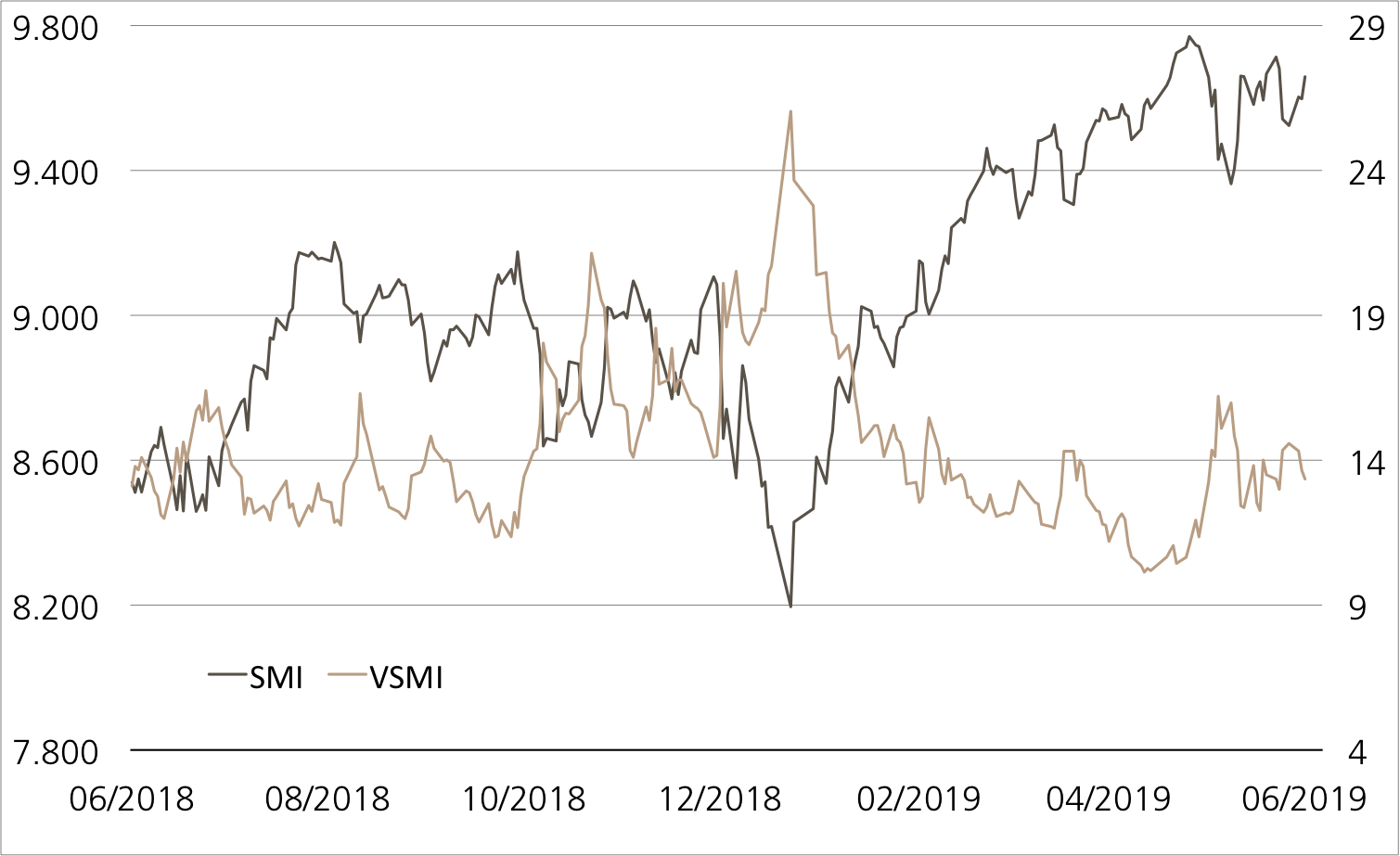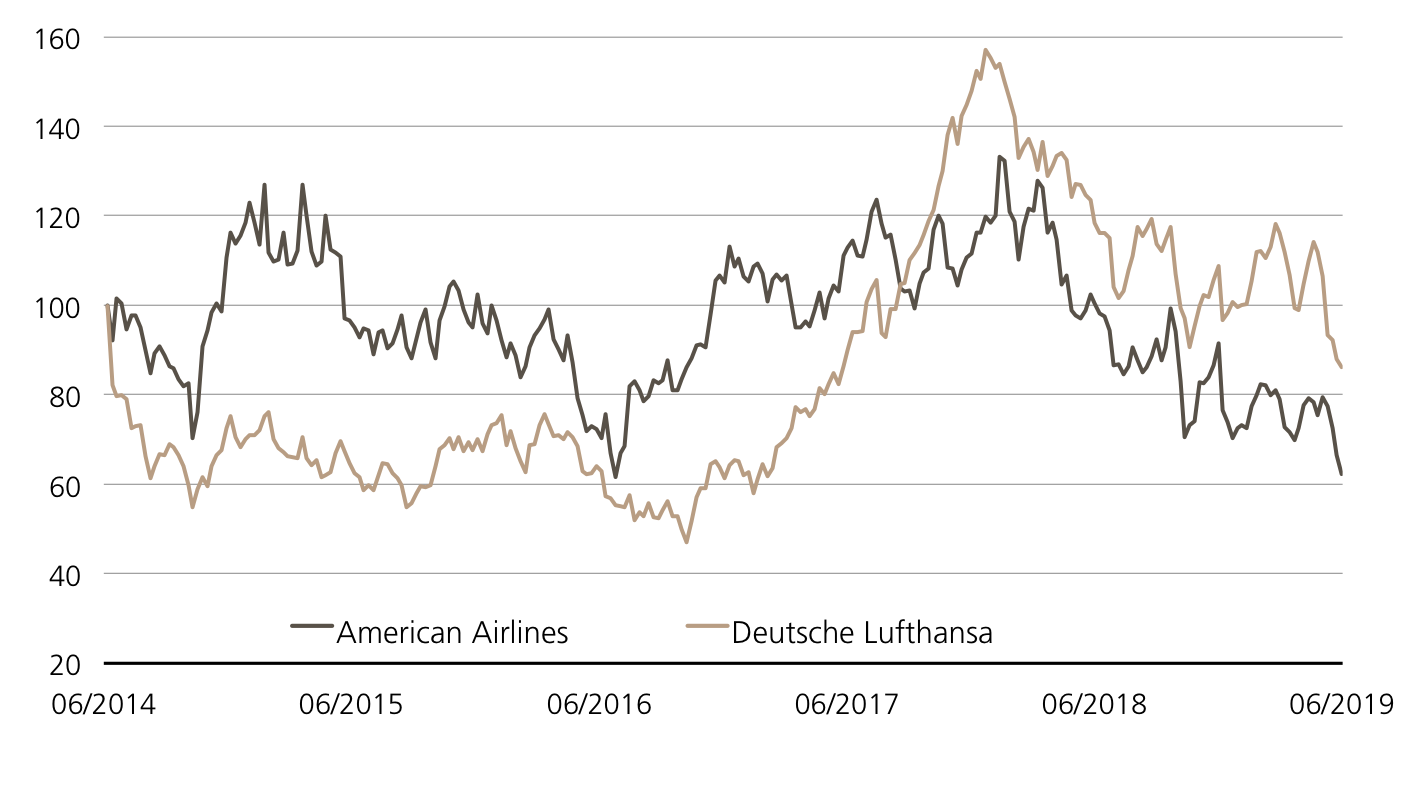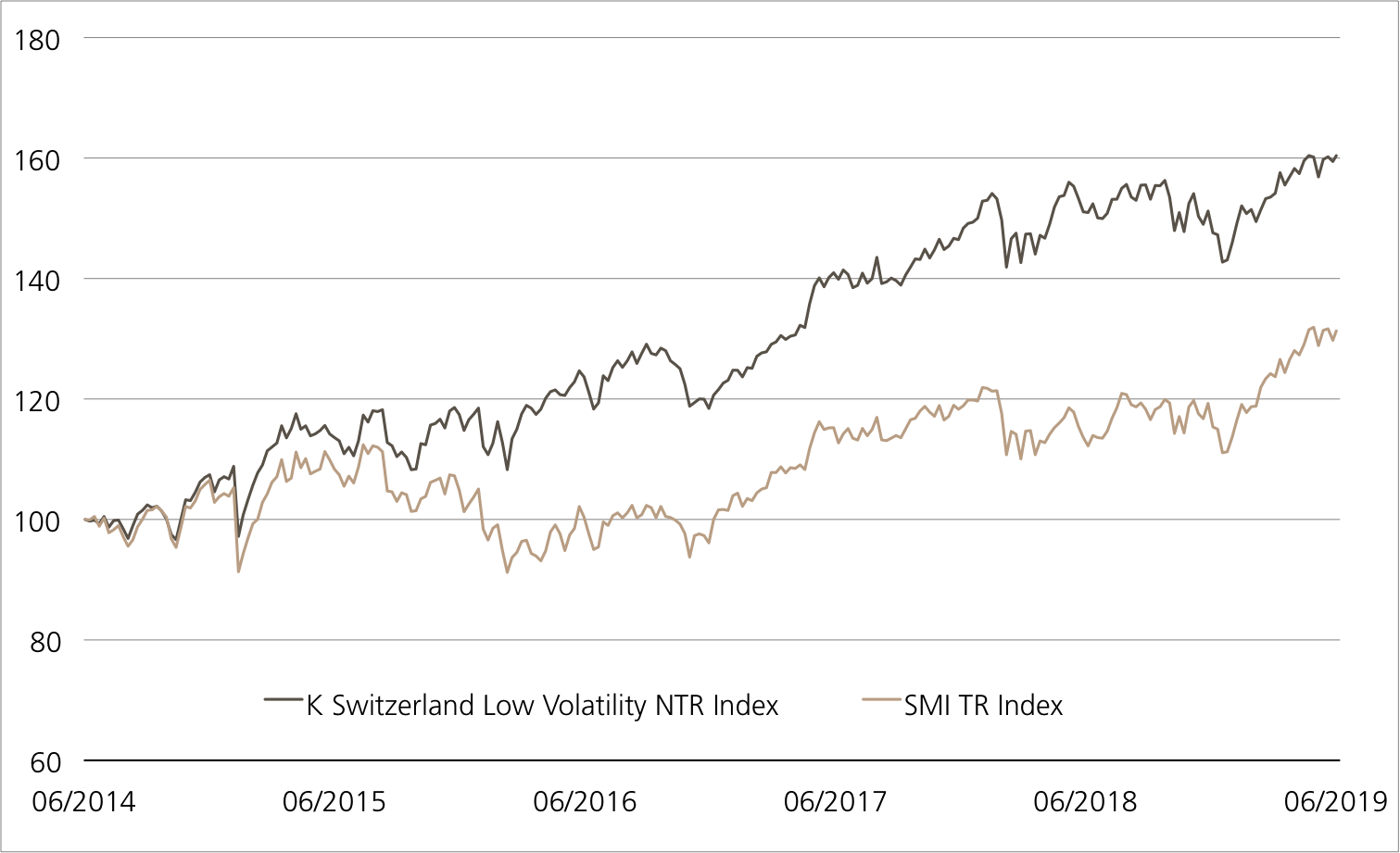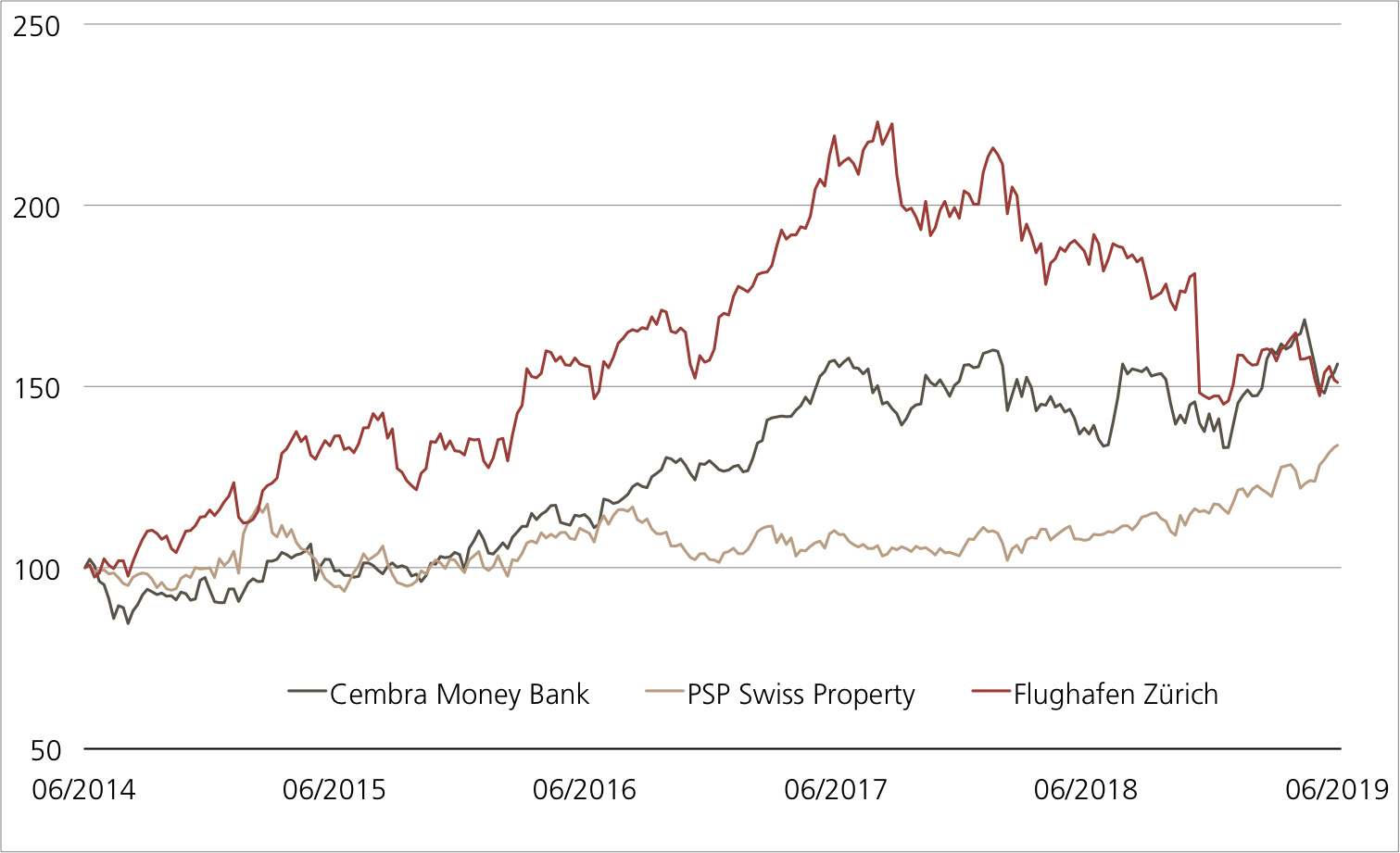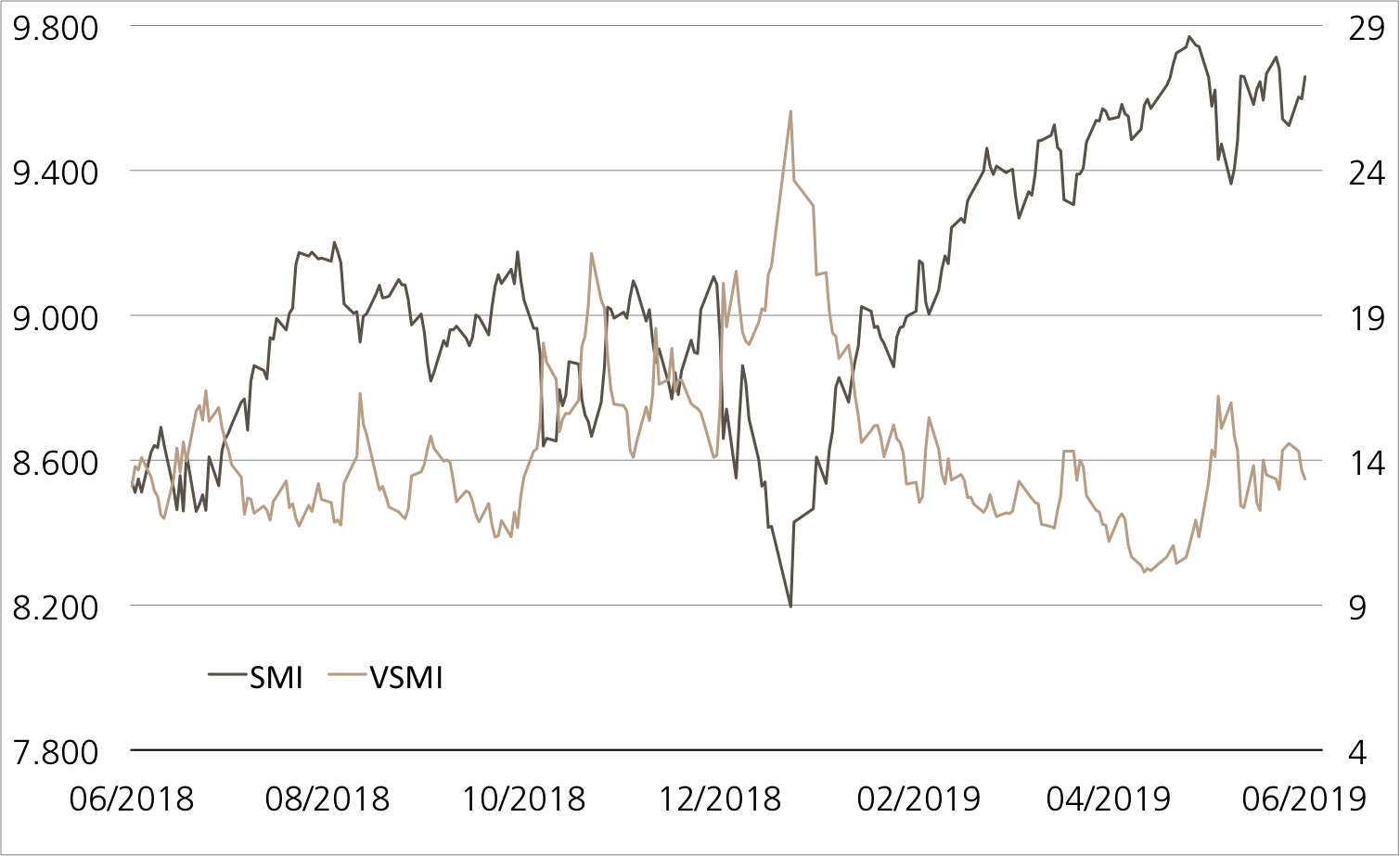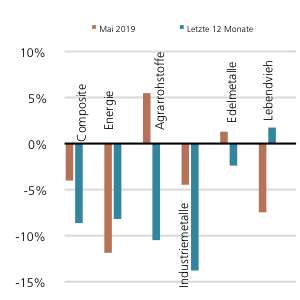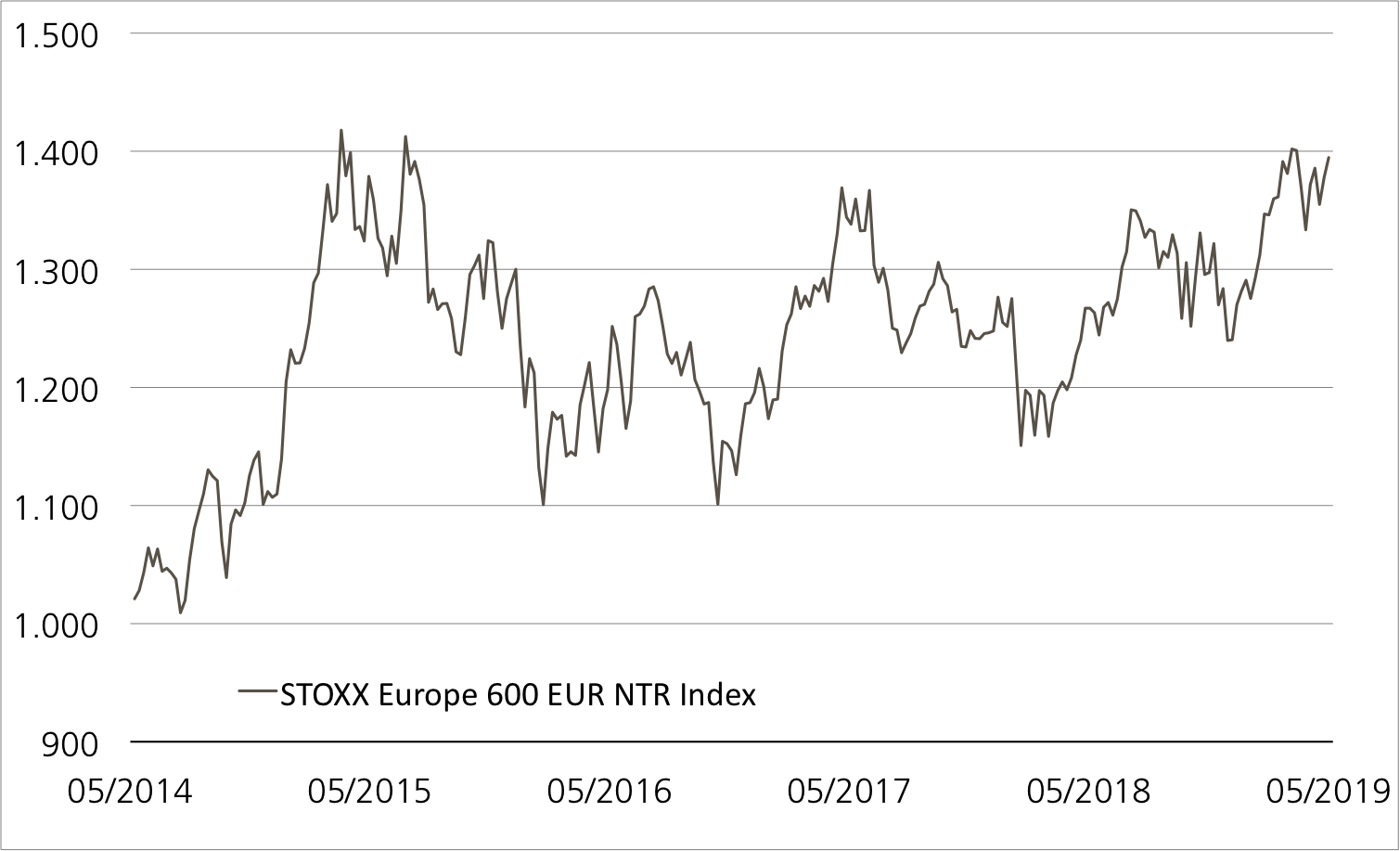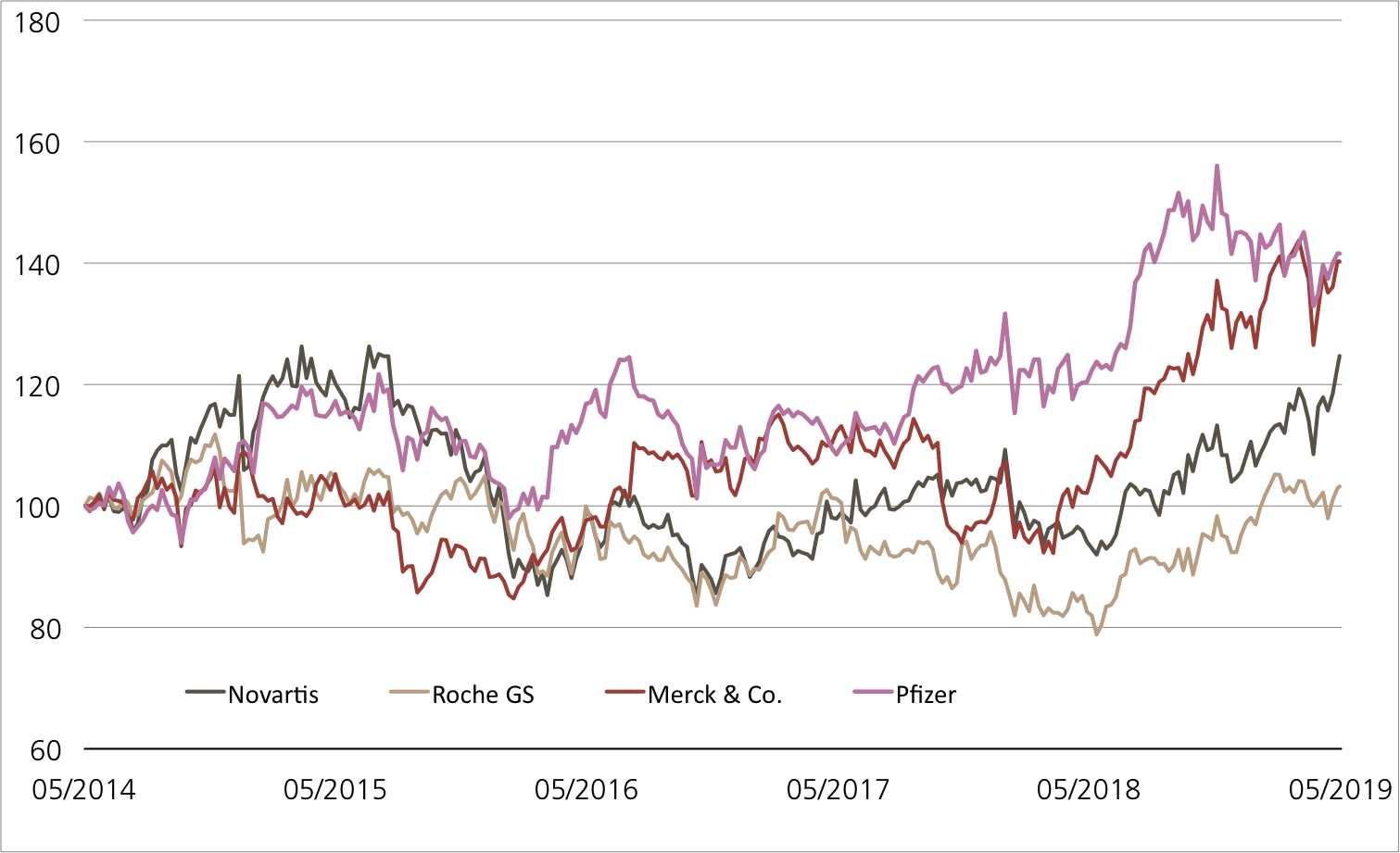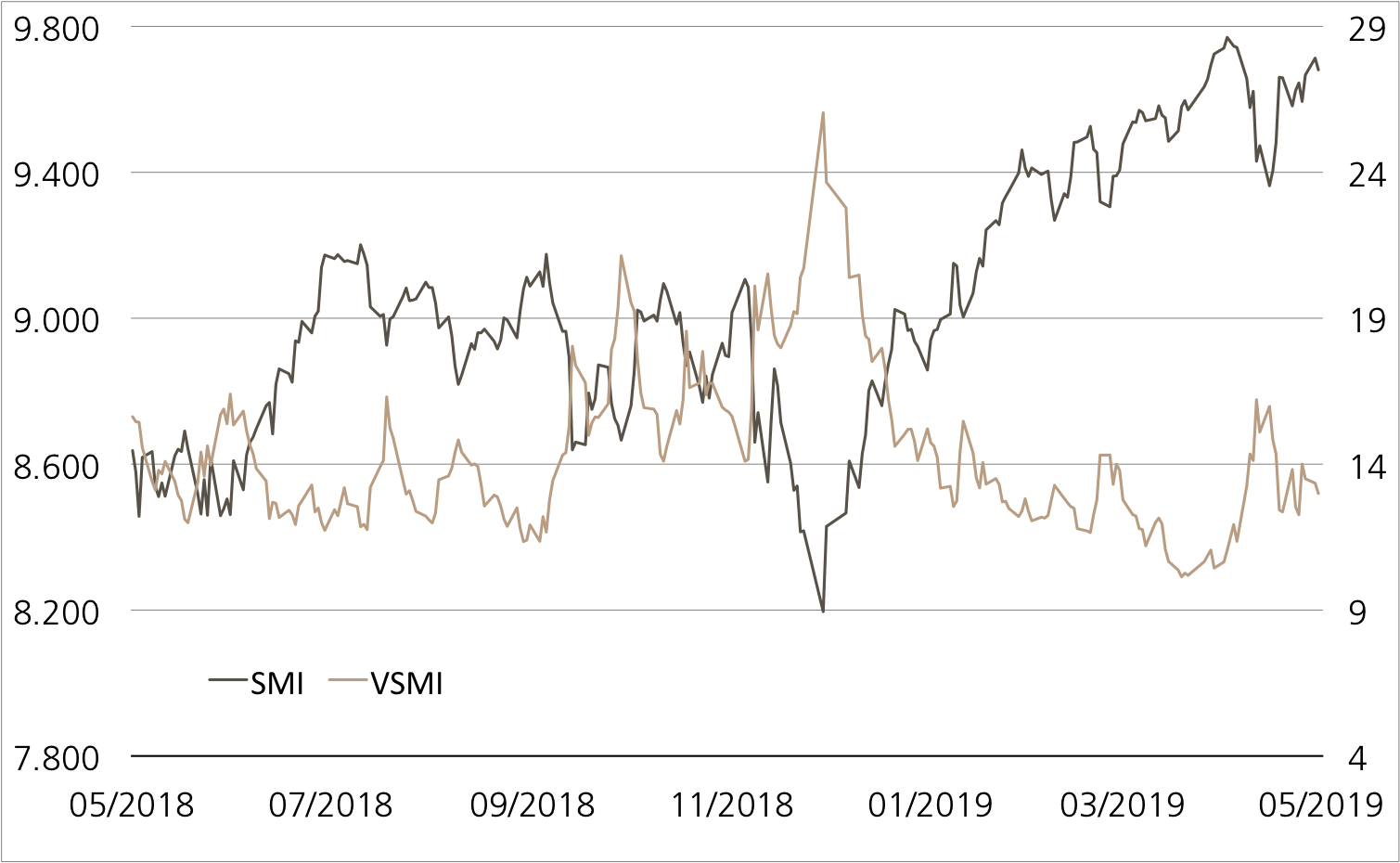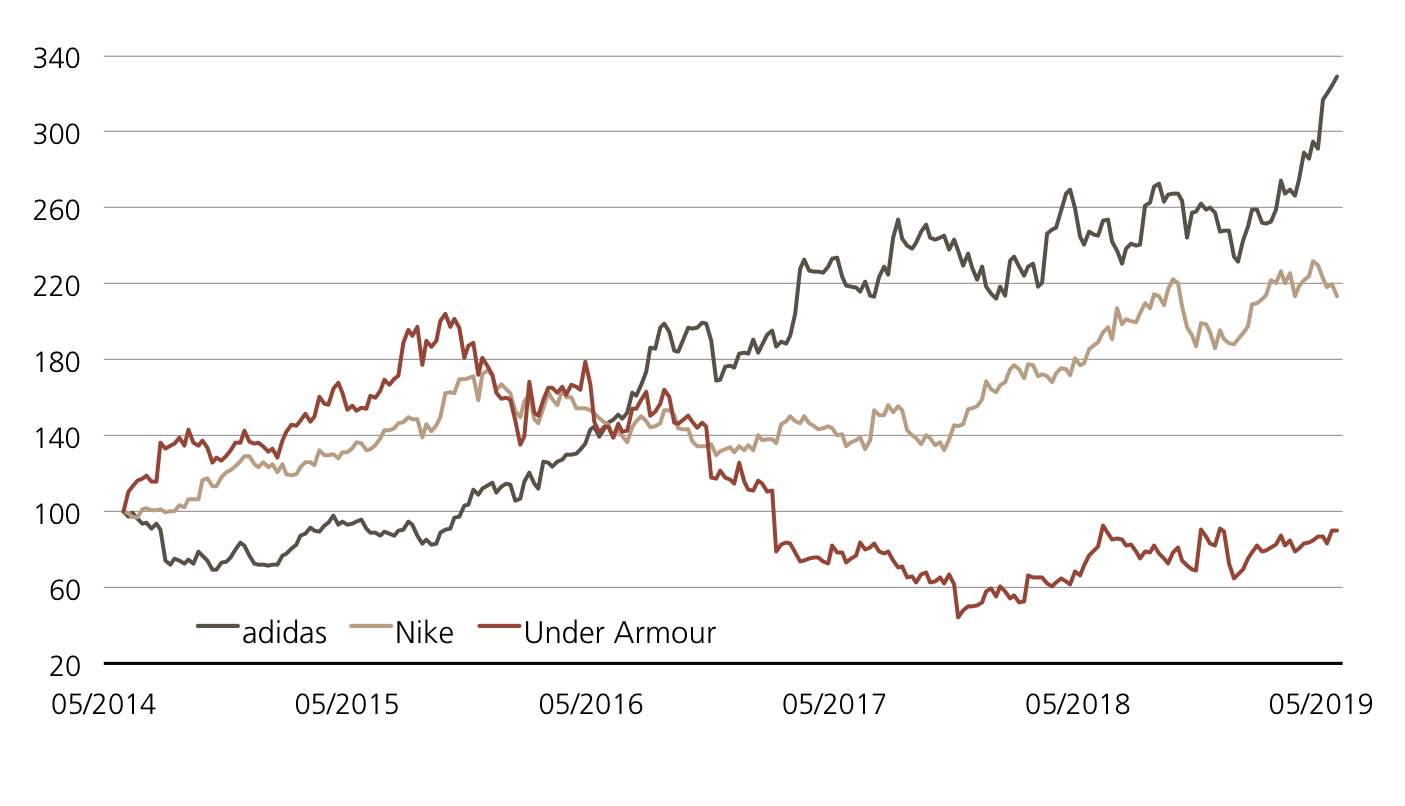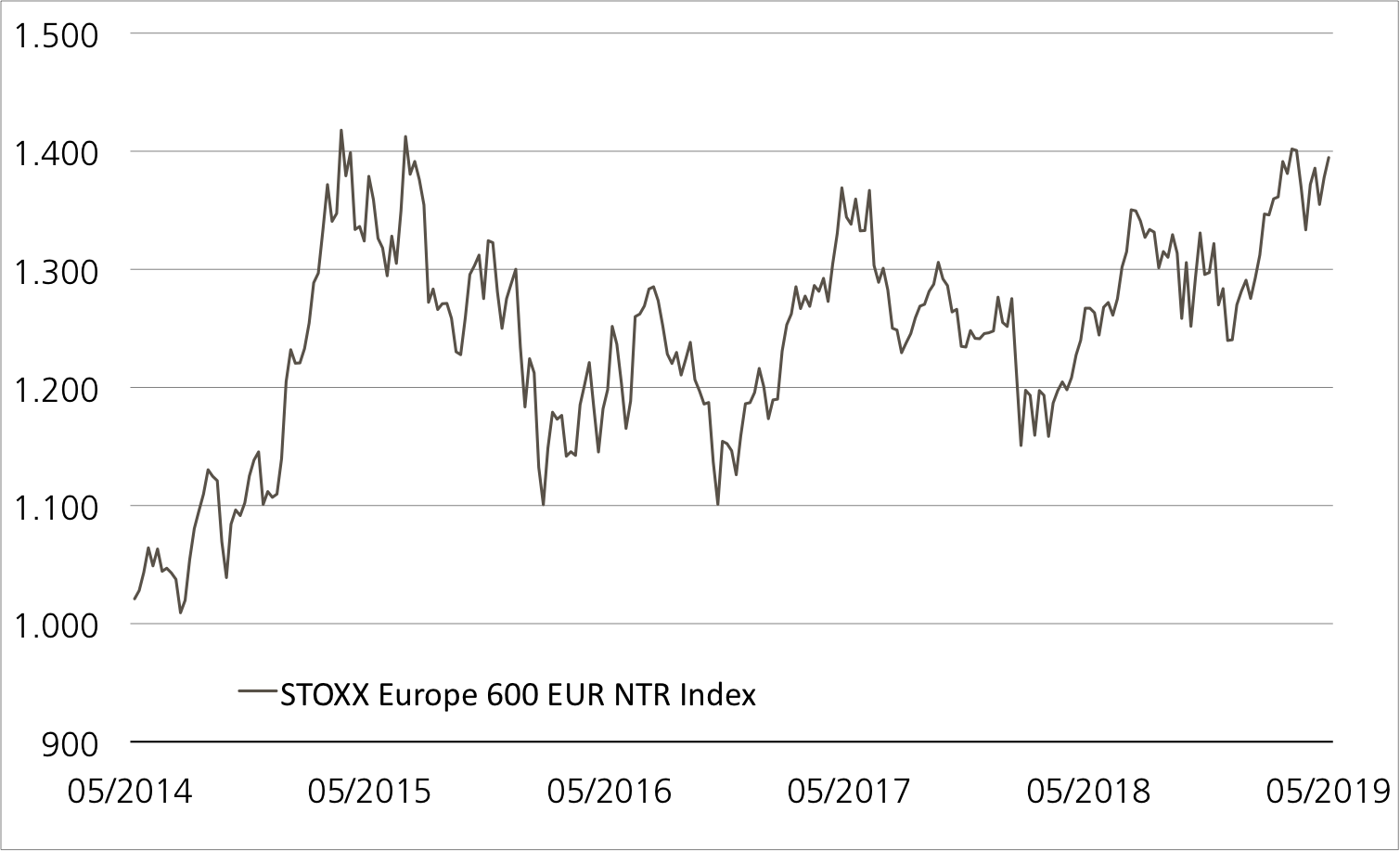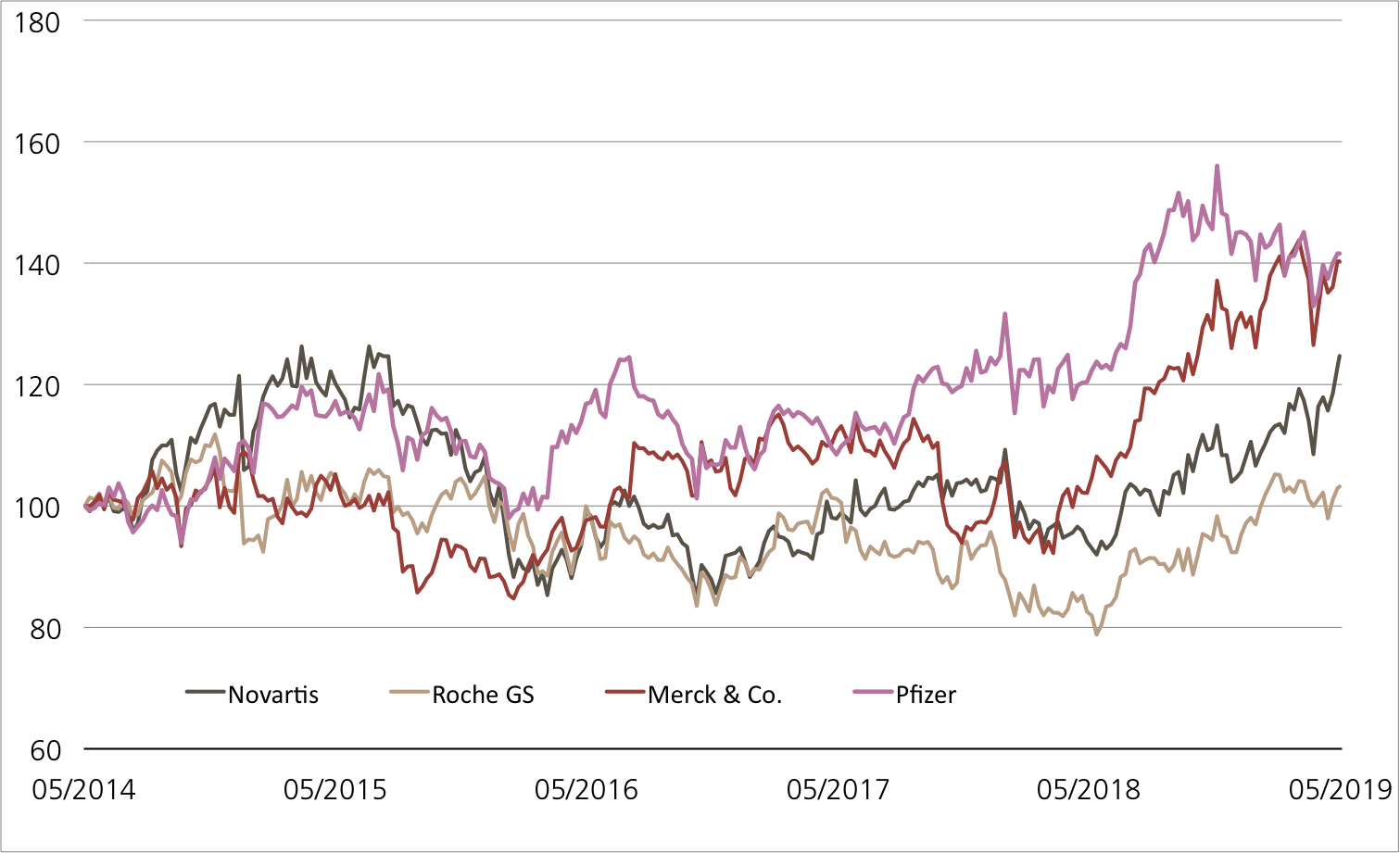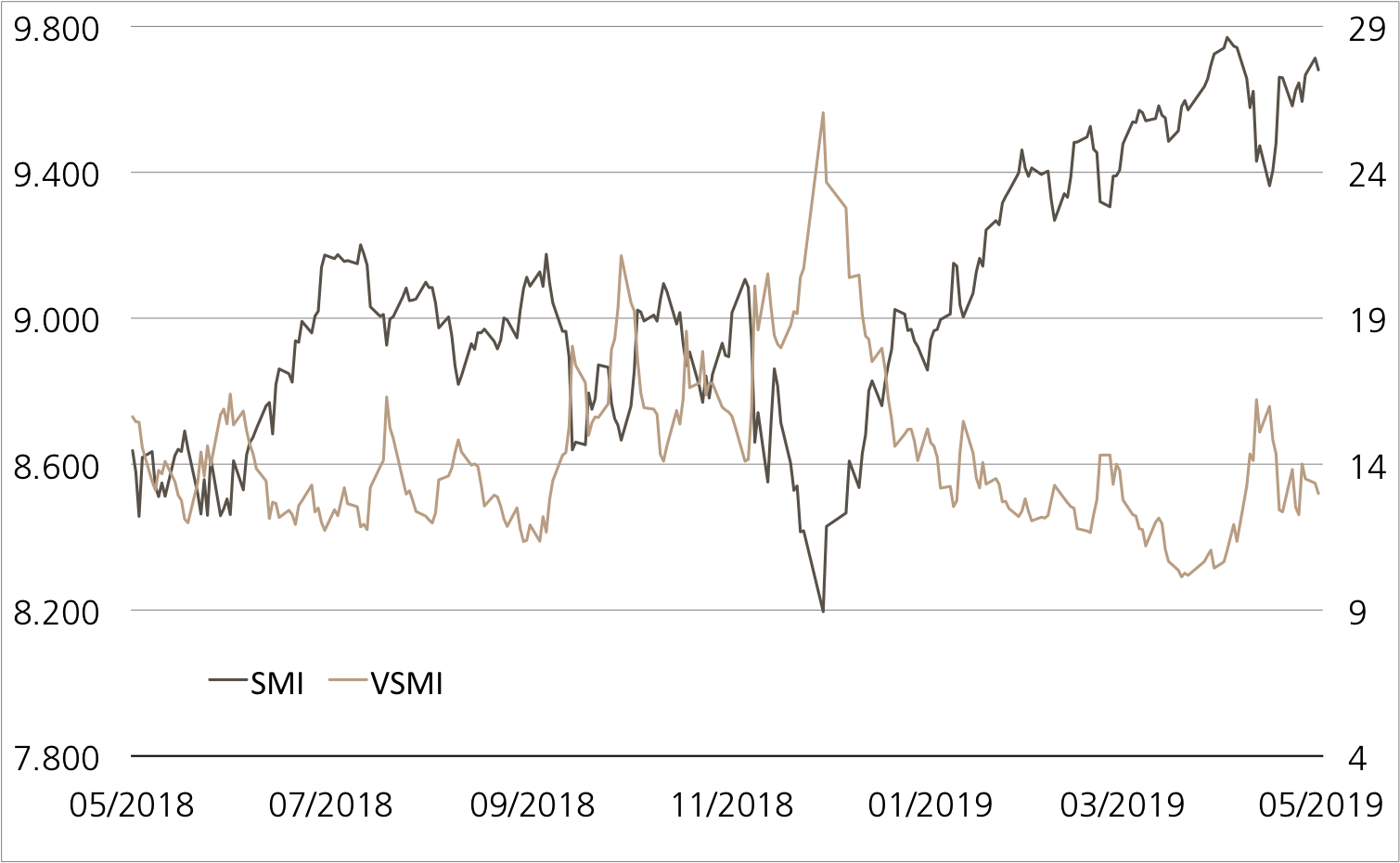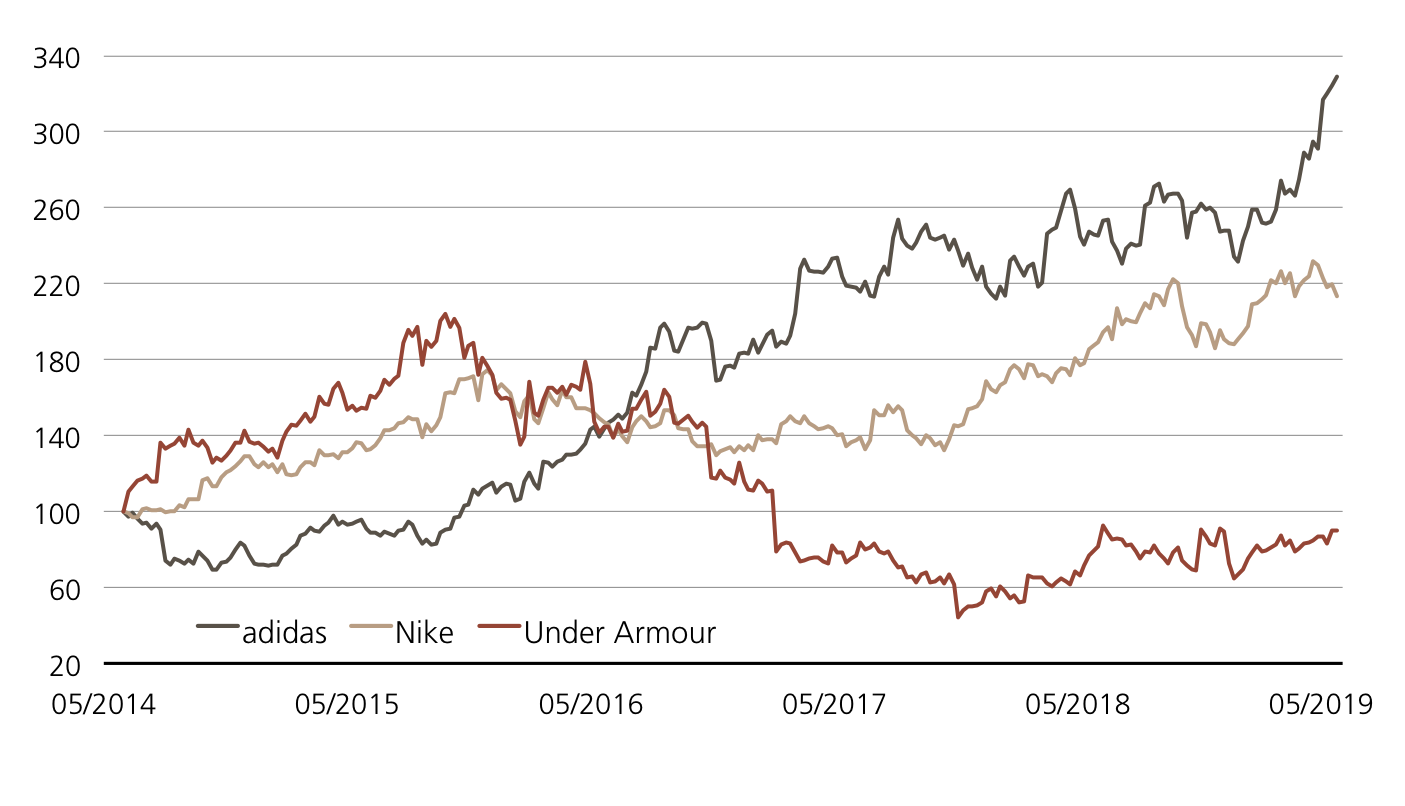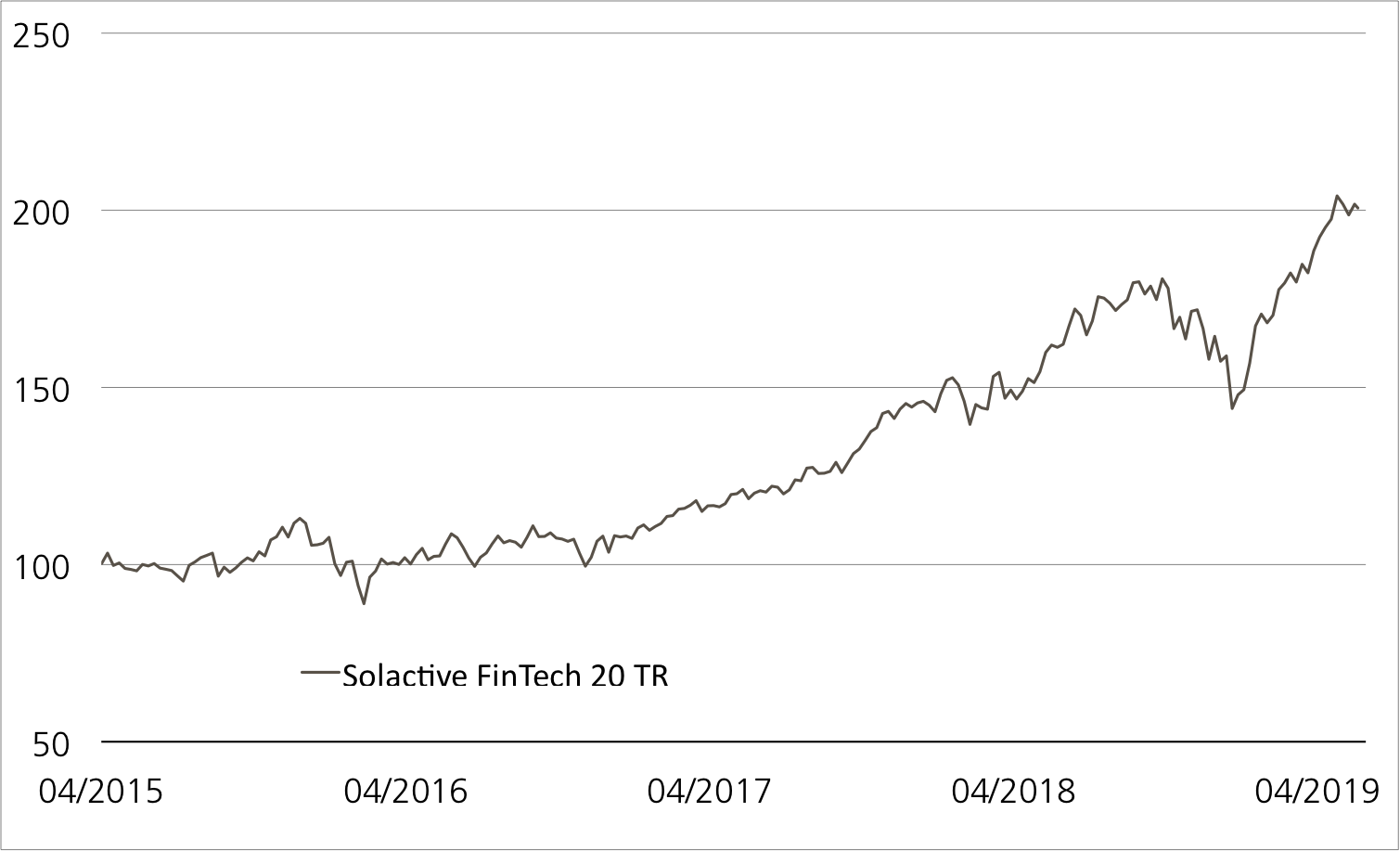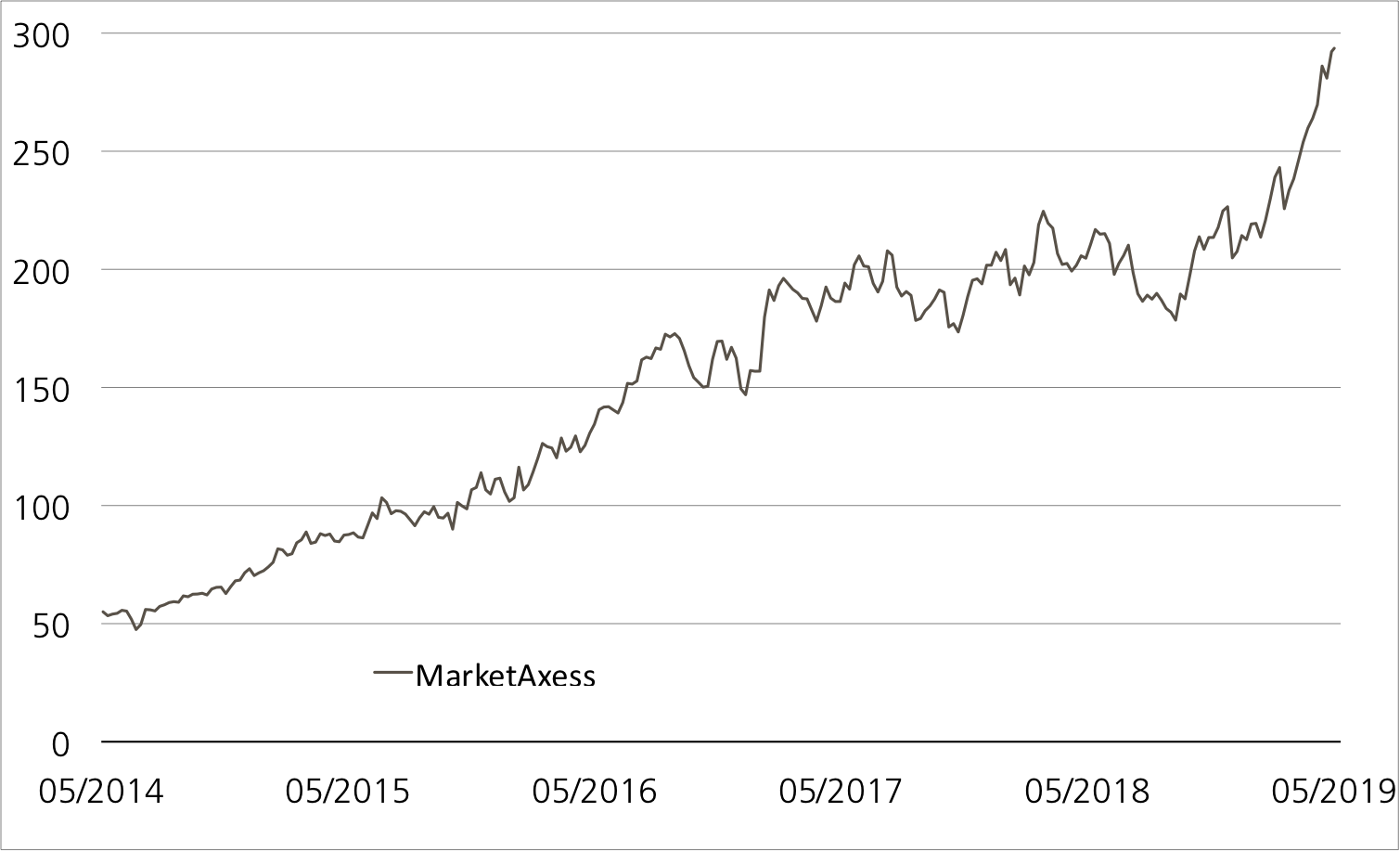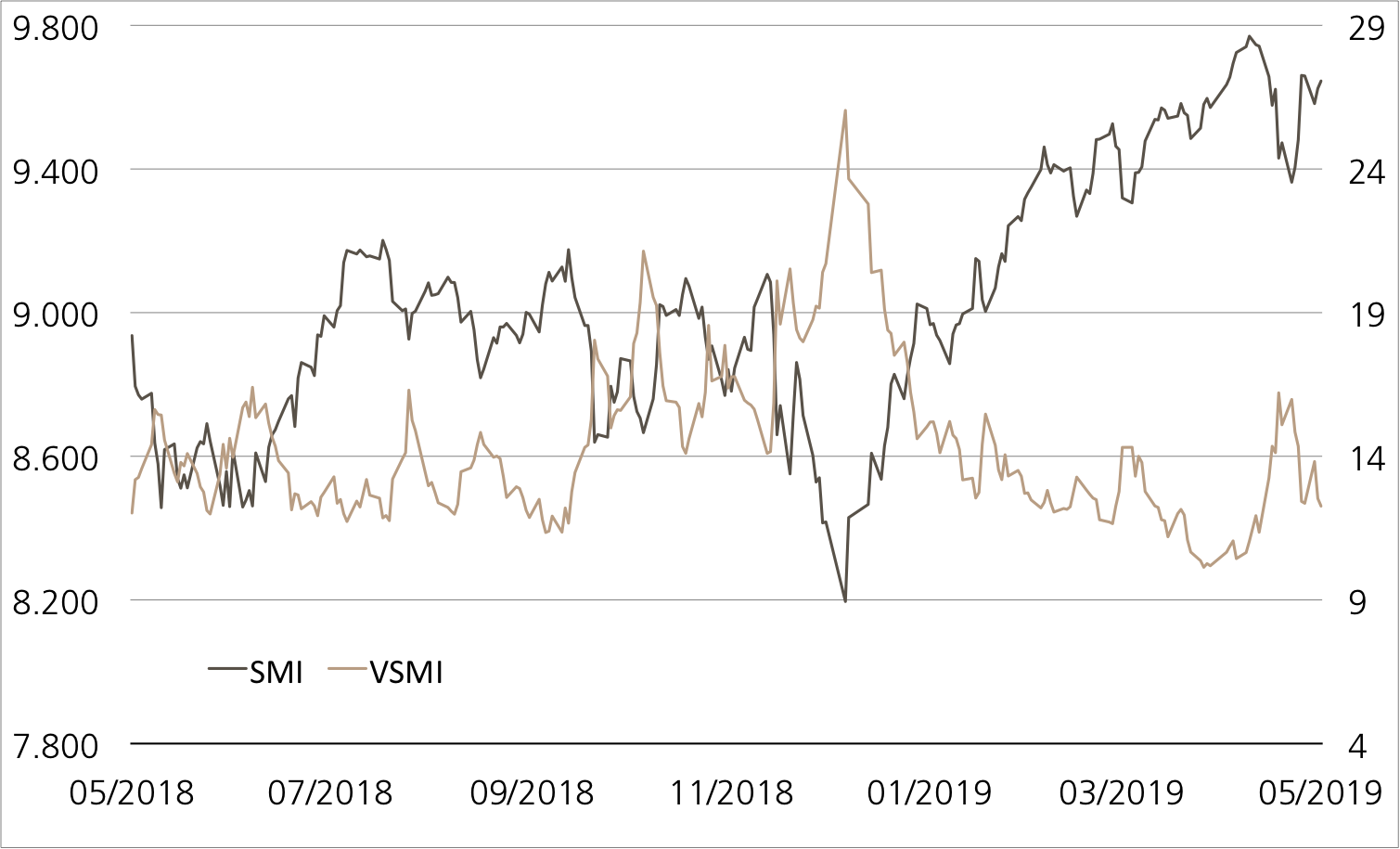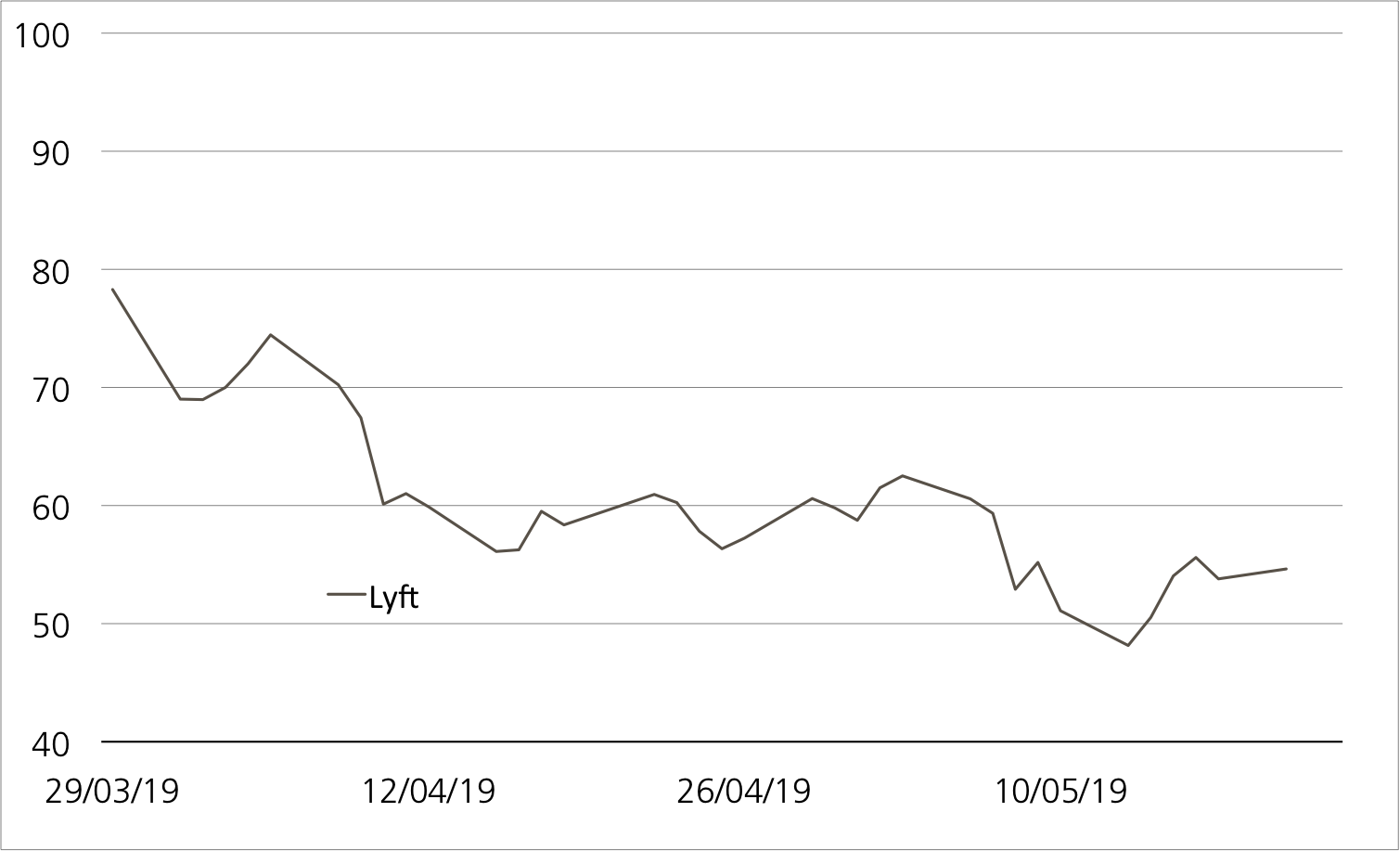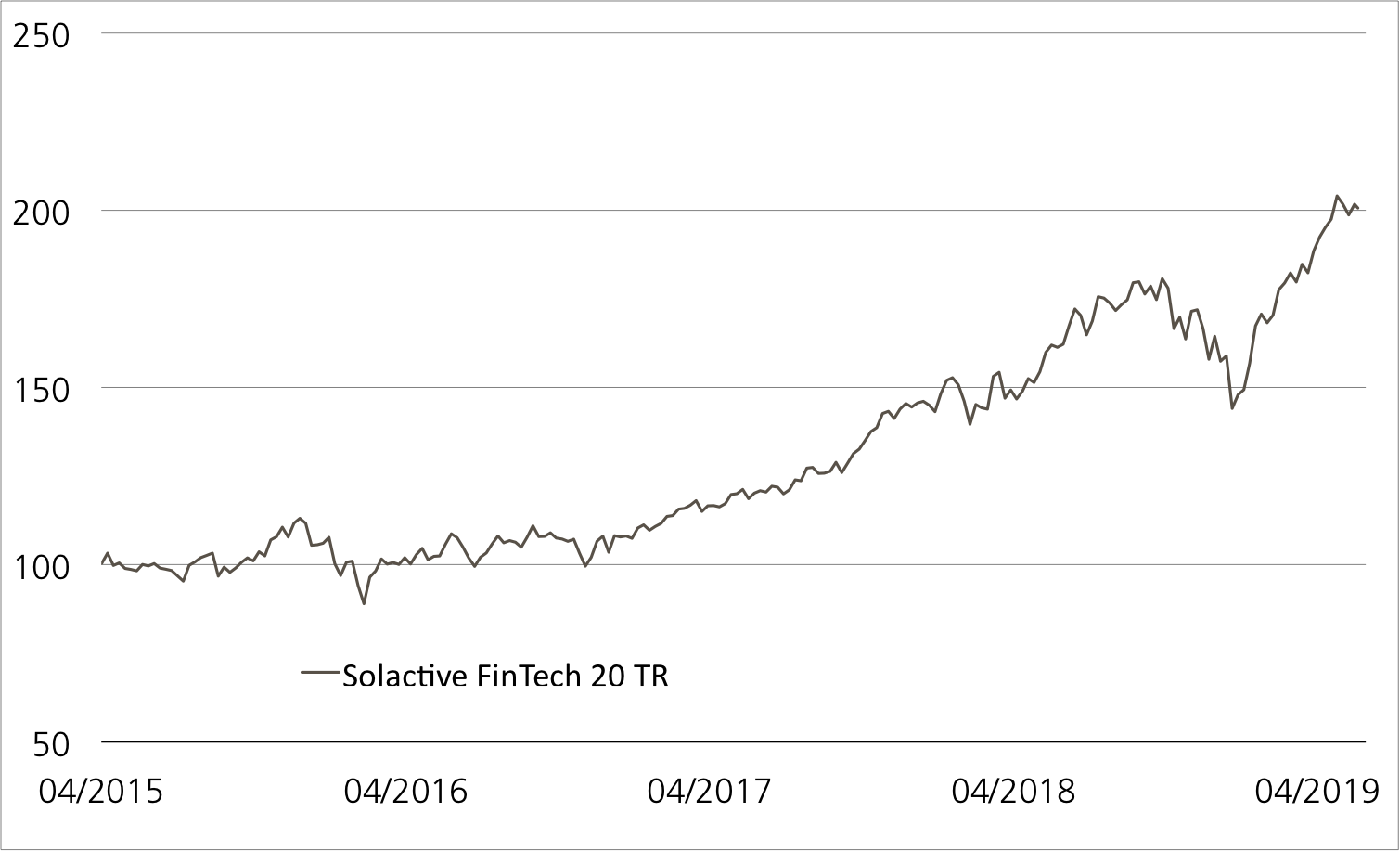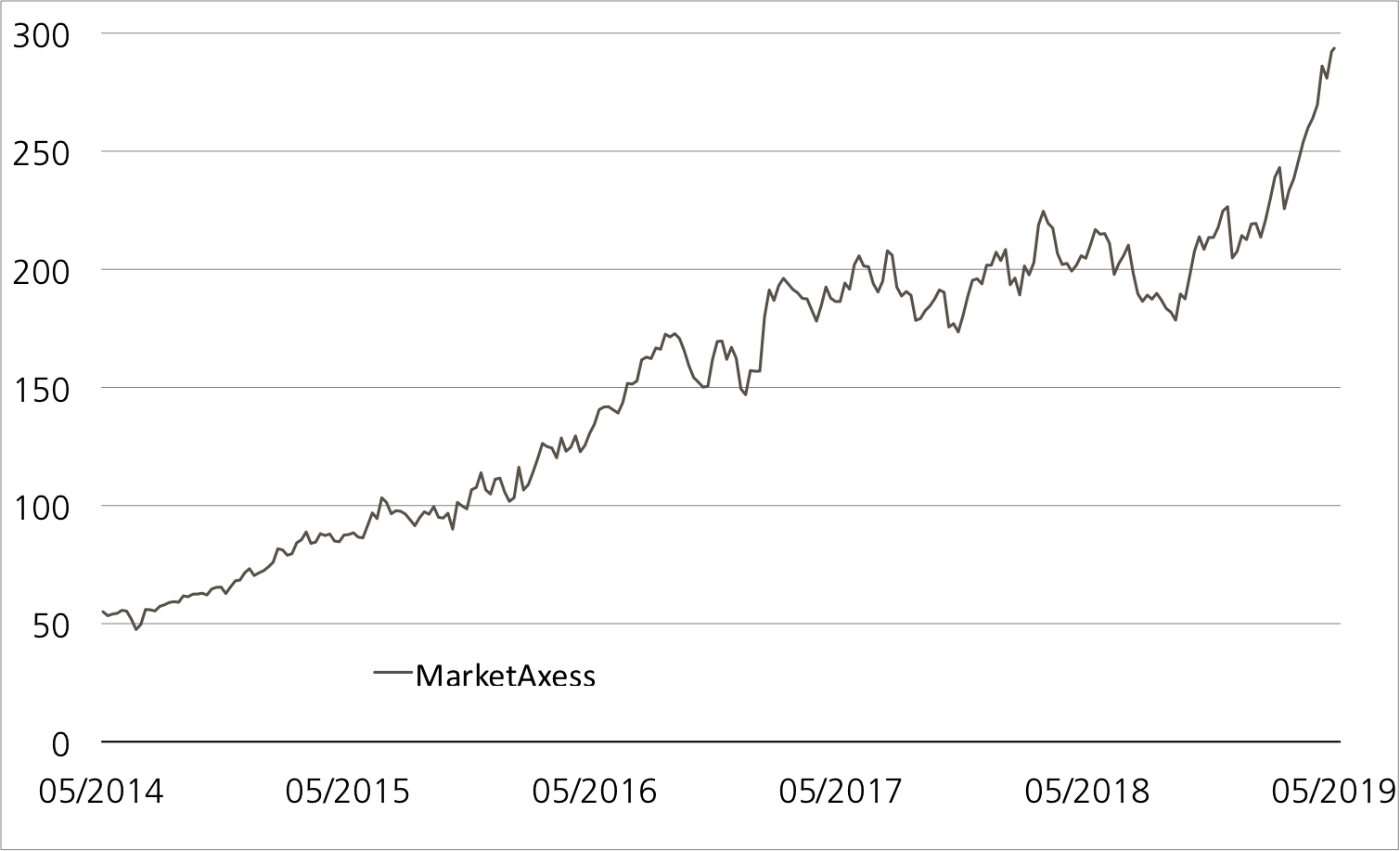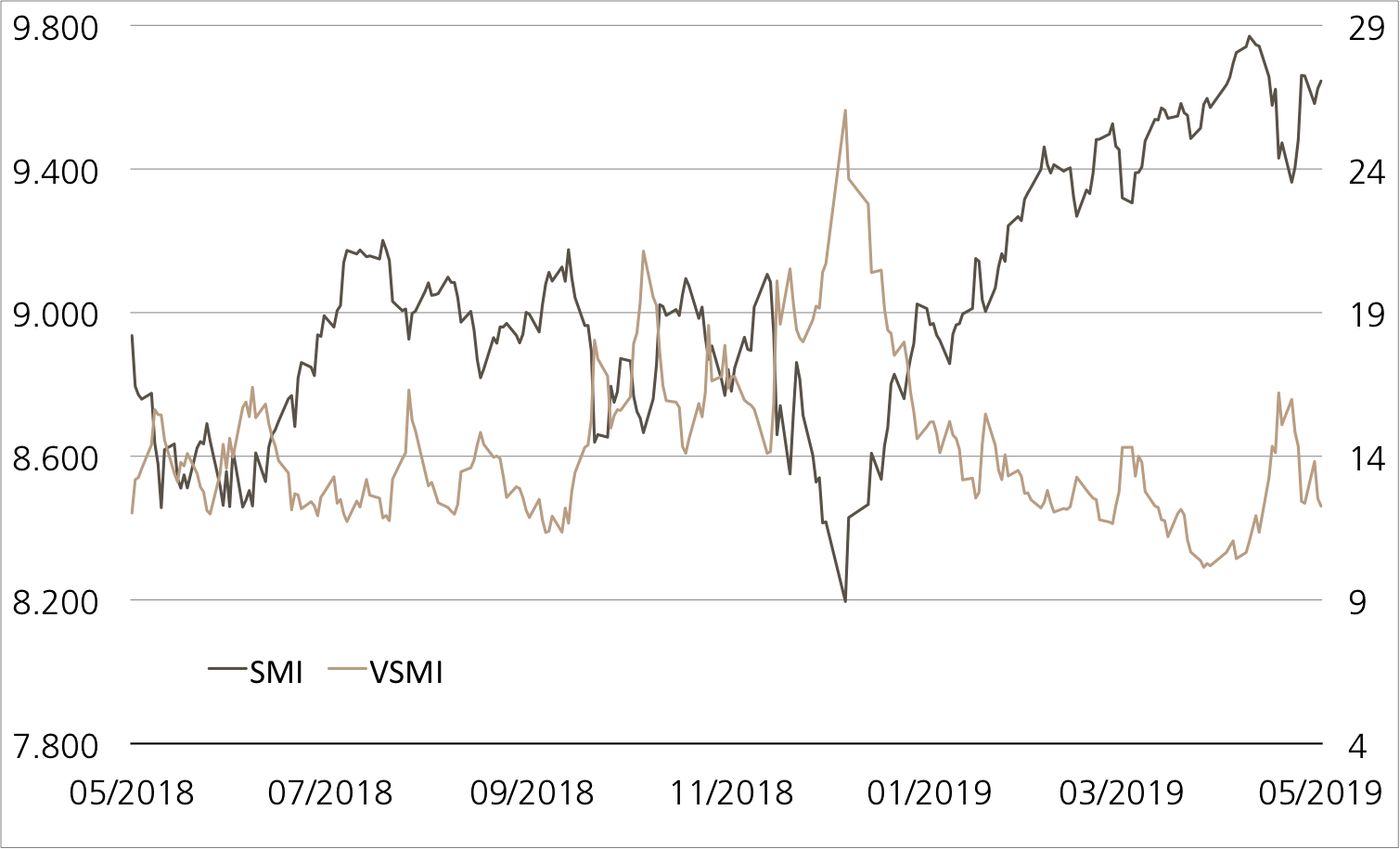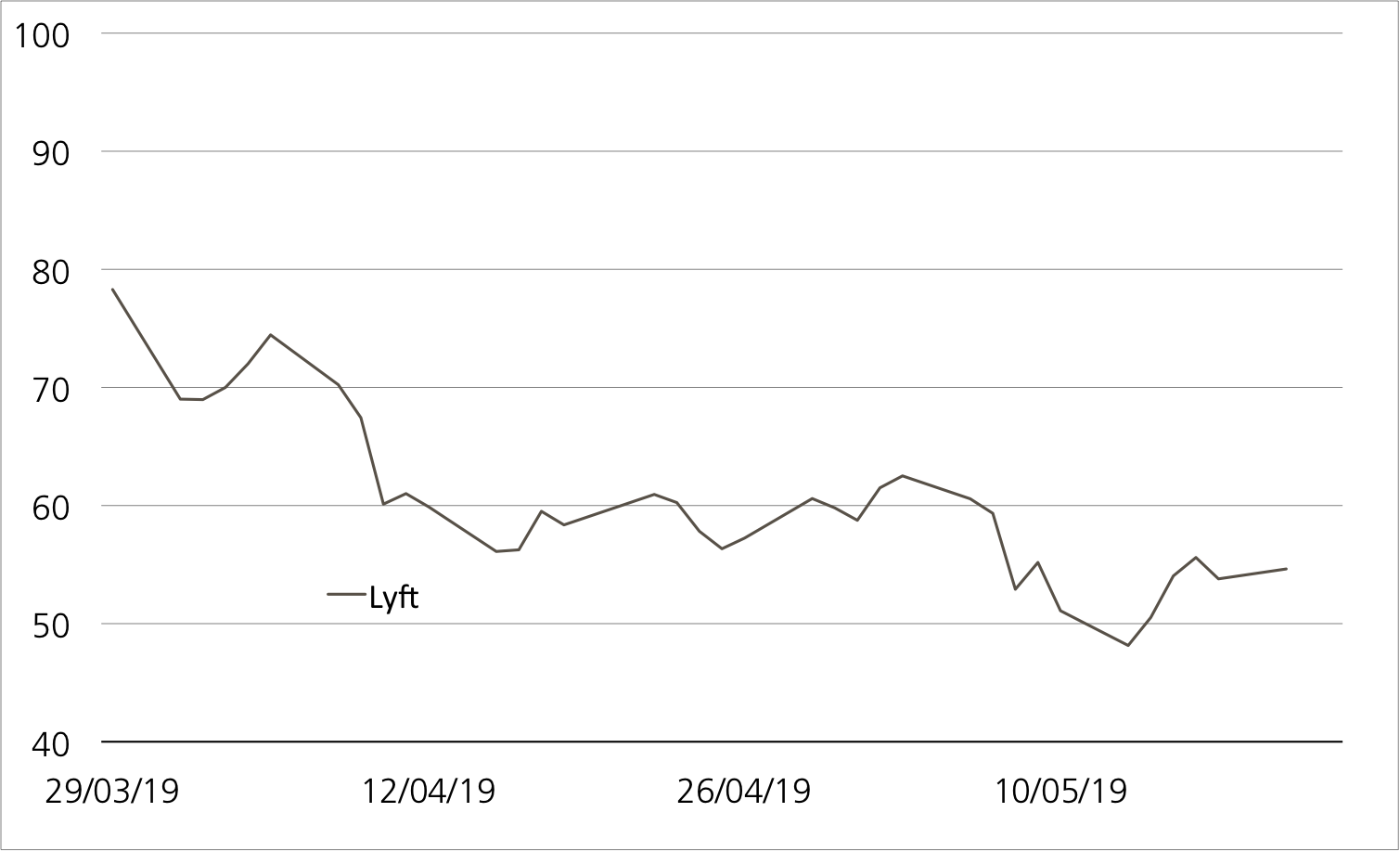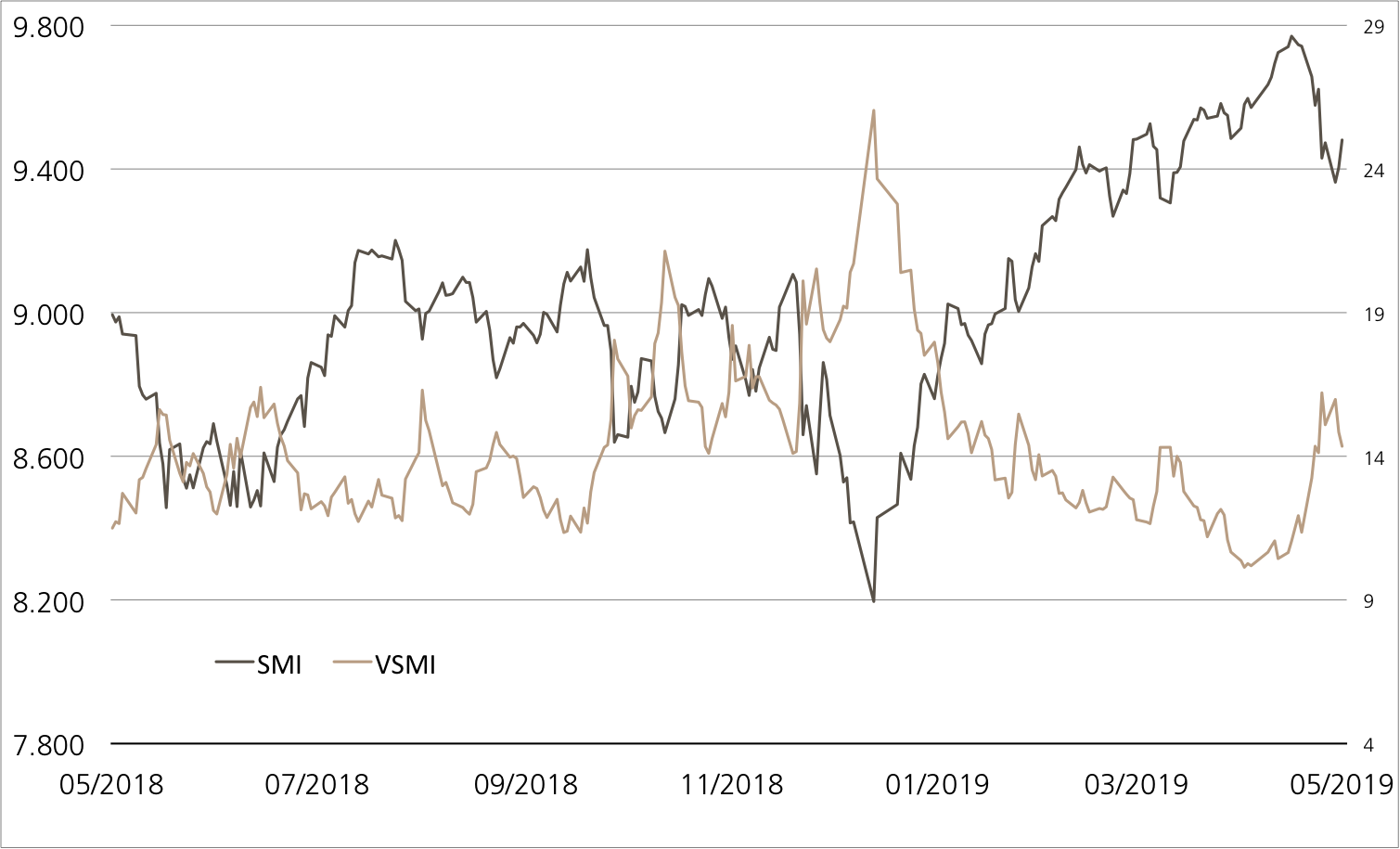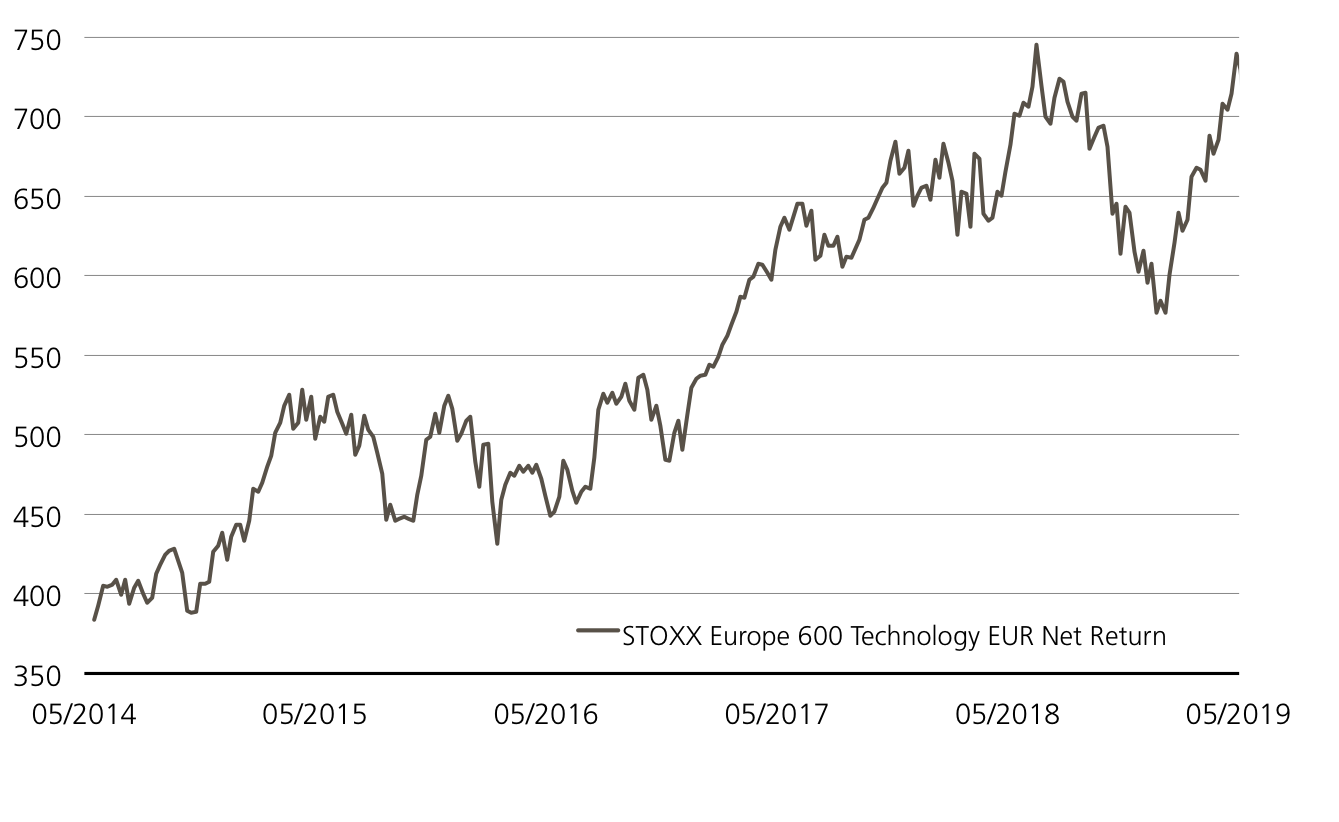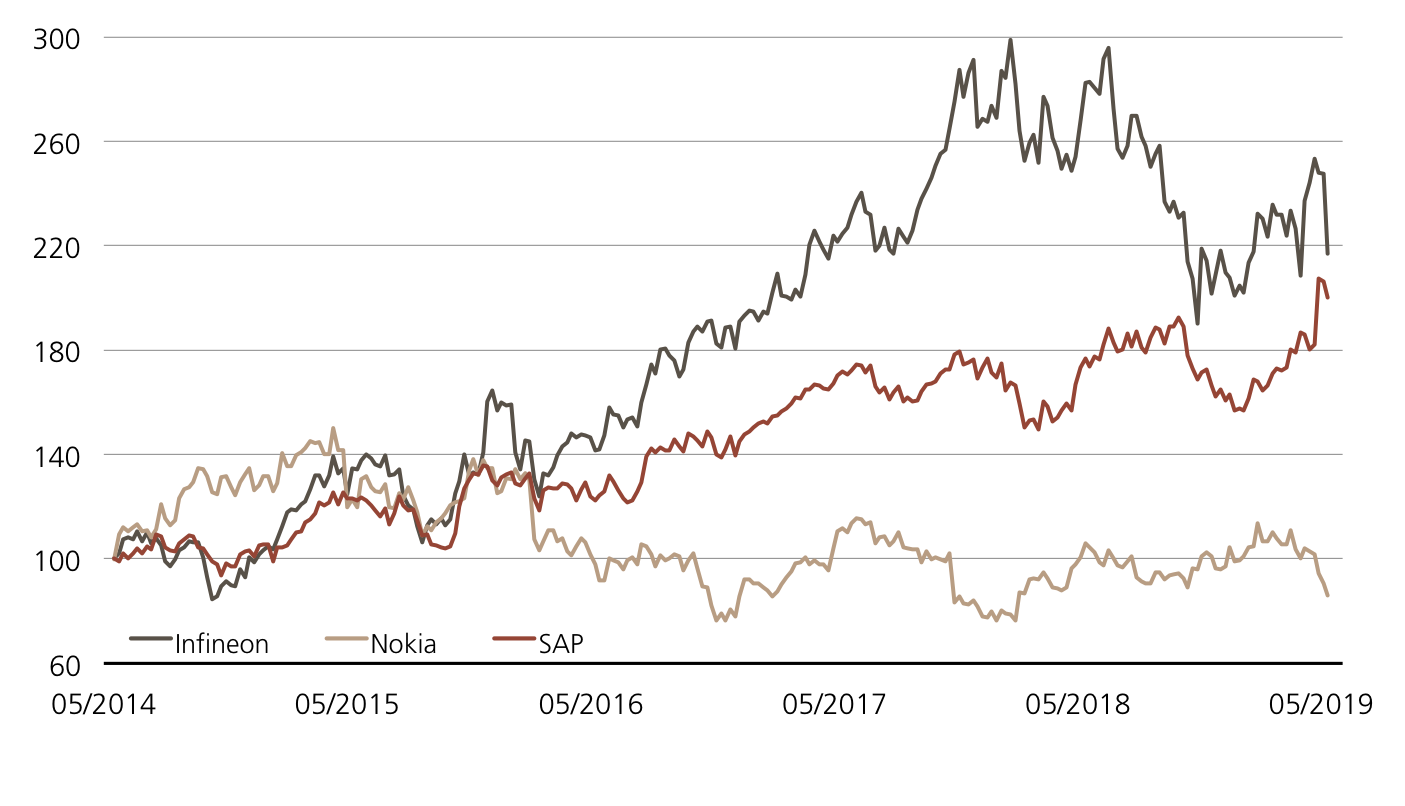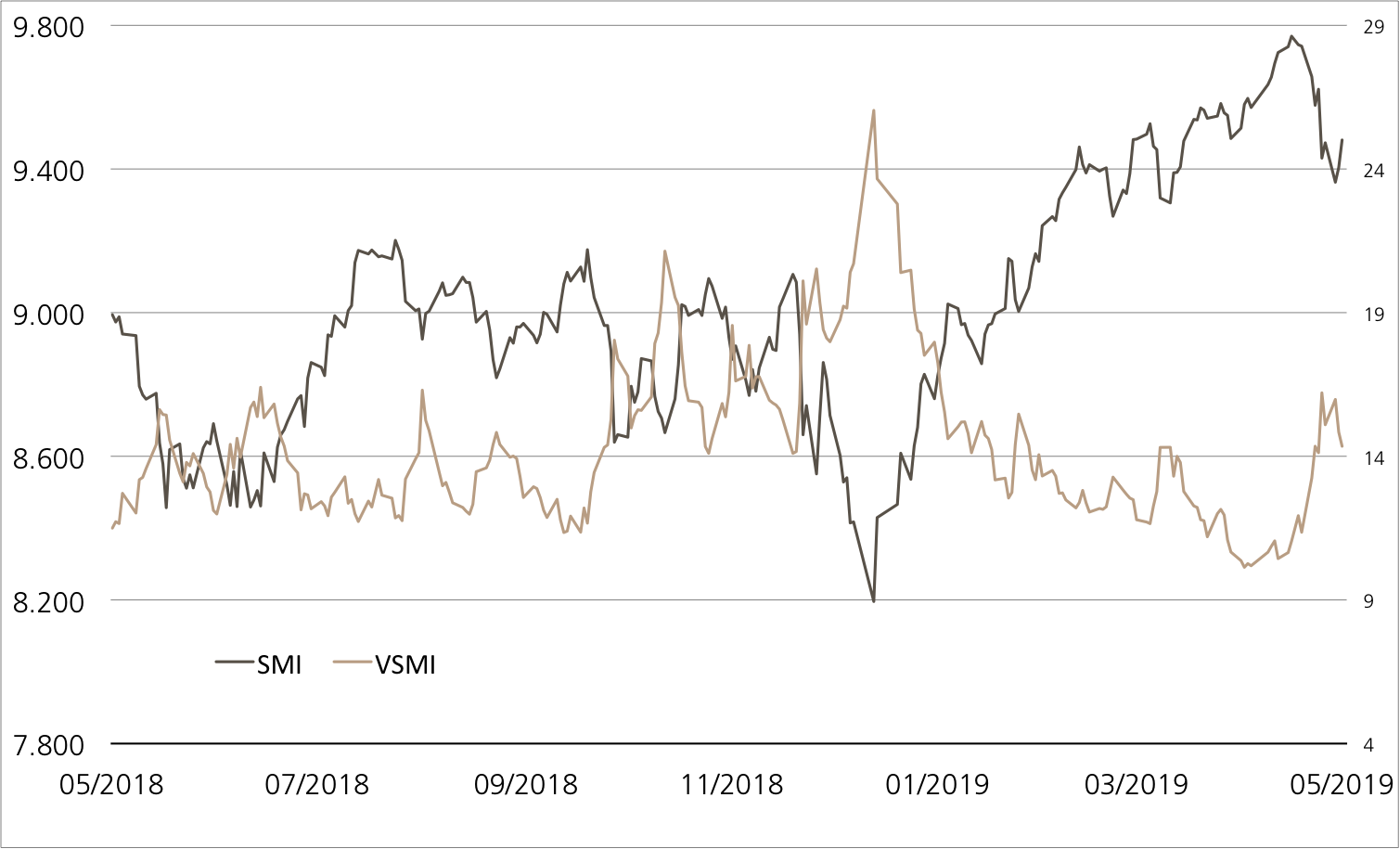Weekly Hits: L’or, monnaie de crise, Facebook & Twitter
Vendredi, 14.06.2019

- Thème 1: L’or, monnaie de crise - Trois facteurs qui font grimper les prix
- Thème 2: Facebook / Twitter - Une exploitation sur tous les canaux
L’or, monnaie de crise
Trois facteurs qui font grimper les prix
Les 18 et 19 juin, la banque centrale américaine (FED) tiendra sa prochaine réunion régulière. Juste avant cette rencontre déjà, le président de la FED, Jerome Powell, a annoncé un assouplissement de la politique monétaire. La perspective d’une poursuite de la baisse des taux constitue, avec le conflit commercial toujours en cours, un motif pour la récente hausse de l’or. Au cours de la première semaine de juin, le métal précieux a augmenté de jusqu’à 3.3%.¹ Avec l’ETC (symbole : CGCCIU) sur l’indice UBS Bloomberg CMCI Gold CHF Monthly Hedged TR, on peut compléter simplement et de manière rentable son portefeuille en y ajoutant cette monnaie de crise. Le nouveau Callable Worst of Kick-In GOAL (symbole : KDRWDU) sur Barrick Gold, Freeport-McMoRan et Newmont Goldcorp propose également des conditions intéressantes. En tant que sous-jacents de cette structure très appréciées, les trois bénéficiaires potentiels du prix de l’or permettent le versement d’un coupon d’un montant de 11.25% p.a. Pendant la période de 12 mois, le trio minier dispose d’une marge de sécurité de 50%.
Le 4 juin, Jerome Powell a tenu à Chicago le discours d’ouverture d’une conférence de la FED. En réalité, ce mot d’accueil traitait, tout comme l’ensemble de l’événement, de l’orientation à long terme de la politique monétaire. Mais pour commencer, le président de la FED a abordé les turbulences mondiales actuelles. « Nous ne savons pas comment et quand la situation s’arrangera », a-t-il déclaré au sujet du conflit commercial. Selon Powell, la FED suit de très près les évolutions. La banque centrale agira de manière appropriée, comme toujours, afin de maintenir l’expansion de la plus grande économie mondiale. (Source : Federal Reserve, Opening Remarks, Chair Jerome H. Powell, 04.06.2019). A proprement parler, ce sont très exactement trois phrases tirées d’un discours d’à peine 14 minutes qui ont incité les marchés à prévoir une prochaine baisse des taux. Quoi qu’il en soit, à moins de 2.10%, le rendement des emprunts d’Etat américains à 10 ans était tombé au début du mois à son plus bas niveau depuis septembre 2017.
Selon UBS CIO GWM, les taux américains sont un facteur stimulant pour l’or. Les experts citent également d’autres facteurs d’influence pour la hausse des cours du métal précieux, à savoir la volatilité accrue des actions et la faiblesse du dollar américain. Rendements US, craintes des investisseurs, billet vert : dans la perspective du second semestre 2019, UBS CIO GWM coche chacun de ces trois facteurs positifs pour le prix de l’or. En conséquence, les spécialistes des placements conseillent encore de se positionner sur la monnaie de crise. Selon eux, c’est pour les investisseurs le moyen de se protéger contre d’autres turbulences géopolitiques, les indicateurs conjoncturels décevants et des fluctuations boursières accrues. Des analyse d’UBS CIO, GWM ont révélé que précisément les investisseurs visant le long terme ont pu réduire la volatilité de leur portefeuille par un recours à l’or. (Source : UBS CIO GWM, Gold: A hedge with benefits, Precious metals, 15.05.2019)
Opportunités: Ceux qui souhaitent miser sur ce genre d’assurance sans détenir physiquement le métal précieux trouveront dans l’ETC (symbole : CGCCIU) sur le UBS Bloomberg CMCI Gold CHF Monthly Hedged TR Index une véritable alternative. Le sous-jacent suit le prix de l’or en se positionnant sur divers contrats à terme de différentes durées. Avec le Worst of Kick-In GOAL (symbole : KDRWDU) sur Barrick Gold, Freeport-McMoRan et Newmont Goldcorp, l’objectif est moins l’assurance que l’optimisation du rendement. Le produit libellé en dollars US est doté d’un coupon de 11,25% p.a. Tant qu’aucun sous-jacent n’atteint ou ne passe sous la barrière de 50% du cours initial, l’émetteur rembourse intégralement le nominal à l’échéance.
Risques: Les produits présentés ne bénéficient d’aucune protection du capital. Il peut y avoir des pertes avec l’ETC lorsque l’indice sous-jacent baisse. Si, pendant la durée de l’investissement, l’un des sous-jacents du Worst of Kick-In GOAL atteint une seule fois la barrière respective («Kick-In Level») ou est inférieur à celle-ci, le remboursement par amortissement en espèces à l’échéance peut être basé sur la performance la plus faible (Strike) de l’un ou l’autre des sous-jacents (au maximum toutefois à la valeur nominale majorée du coupon). En pareil cas, des pertes sont probables. De plus, avec des produits structurés, l’investisseur supporte le risque d’émetteur, si bien qu’en cas d’insolvabilité d’UBS SA, le capital investi peut être perdu, indépendamment de l’évolution du sous-jacent.
Vous trouverez davantage de produits UBS et des informations sur les opportunités et les risques à l’adresse www.ubs.com/keyinvest.
Or (dollars US par once troy) 5 ans¹
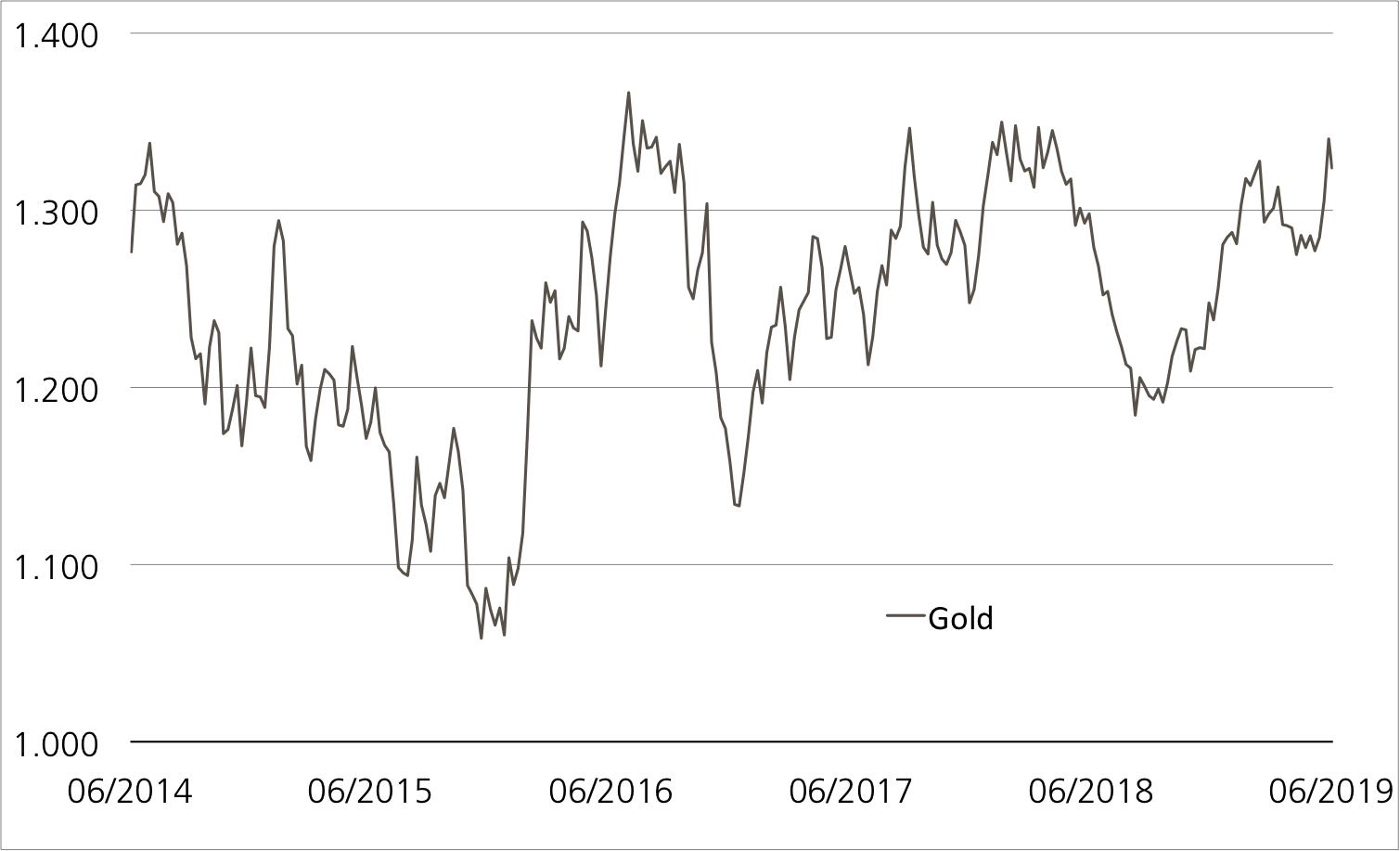
Avec les récents progrès, l’or a rompu avec une tendance baissière à court terme. Dans la fourchette de 1’350 dollar américain, une résistance horizontale attend le métal précieux.
Source: UBS AG, Bloomberg
Valeurs du: 12.06.2019
Barrick Gold vs. Freeport-McMoRan vs. Newmont Goldcorp (5 ans, uniquement aux fins d’illustration, indications en %)¹
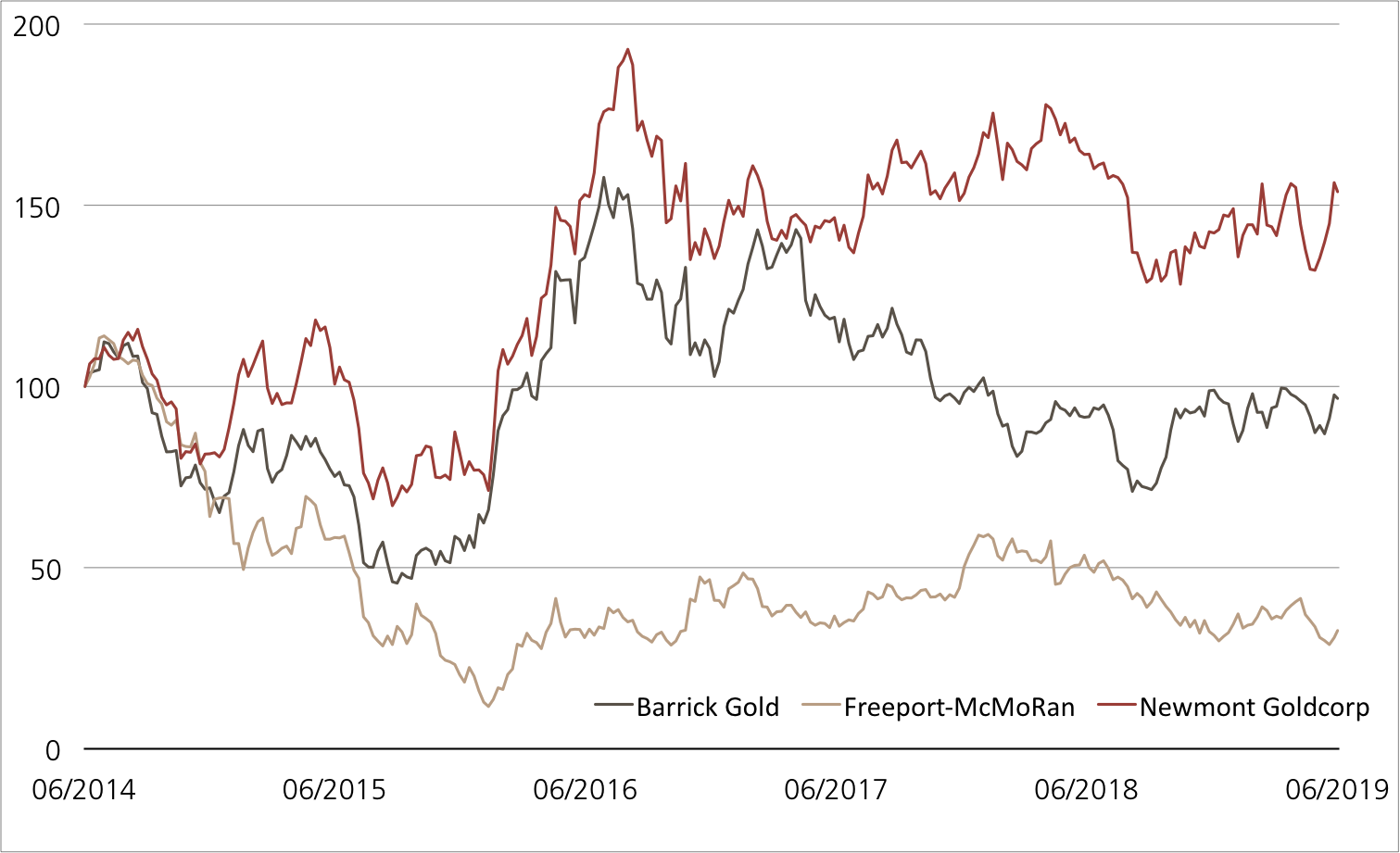
Au cours des cinq dernières années, il y a eu un énorme fossé entre les trois stocks miniers. Alors que Newmont Goldcorp a gagné plus de la moitié, Freeport-McMoRan a nettement reculé.
Source: UBS AG, Bloomberg
Valeurs du: 12.06.2019
¹) Nous attirons votre attention sur le fait que la performance passée n’est pas un indicateur de l’évolution de valeur future.
ETC sur UBS Bloomberg CMCI GoldCHF Monthly Hedged TR Index
| Symbol | CGCCIU |
| SVSP Name | Tracker Certifikat |
| SVSP Code | 1300 |
| Sous-jacent | UBS Bloomberg CMCI Gold CHF Monthly Hedged TR Index |
| Conversion ratio | 10:1 |
| Devise | CHF |
| Frais de gestion | 0.38% p.a. |
| Participation | 100% |
| Echéance | Open End |
| Émetteur | UBS AG, London |
| Bid/Ask | CHF 78.65 / 78.90 |
11.25% p.a. Worst of Kick-In GOAL sur Barrick Gold / Freeport-McMoRan / Newmont Goldcorp
| Symbol | KDRWDU |
| SVSP Name | Barrier Reverse Convertible |
| SVSP Code | 1230 |
| Sous-jacent | Barrick Gold / Freeport-McMoRan / Newmont Goldcorp |
| Coupon | 11,25% p.a. |
| Devise | USD |
| Kick-in Level (barrière) | 50% |
| Echéance | 19.06.2020 |
| Émetteur | UBS AG, London |
| Date de fixation du prix | 19.06.2019, 15:00 h |
Vous trouverez davantage de produits UBS et des informations sur les opportunités et les risques à l’adresse ubs.com/keyinvest.
Source: UBS AG, Bloomberg
Valeurs du: 12.06.2019
Apérçu du marché
| Index | Citation | Semaine¹ |
| SMI™ | 9’859.73 Pt. | 2.1% |
| SLI™ | 1’509.23 Pt. | 2.0% |
| S&P 500™ | 2’879.84 Pt. | 1.9% |
| Euro STOXX 50™ | 3’386.63 Pt. | 1.4% |
| S&P™ BRIC 40 | 4’165.87 Pt. | 2.6% |
| CMCI™ Compos. | 880.90 Pt. | 1.0% |
| Gold (troy ounce) | 1’336.80 USD | 0.2% |
¹ Changement basé sur le cours de clôture du jour précédent par rapport au cours de clôture de la semaine dernière.
SMI™ vs. VSMI™ 1 année
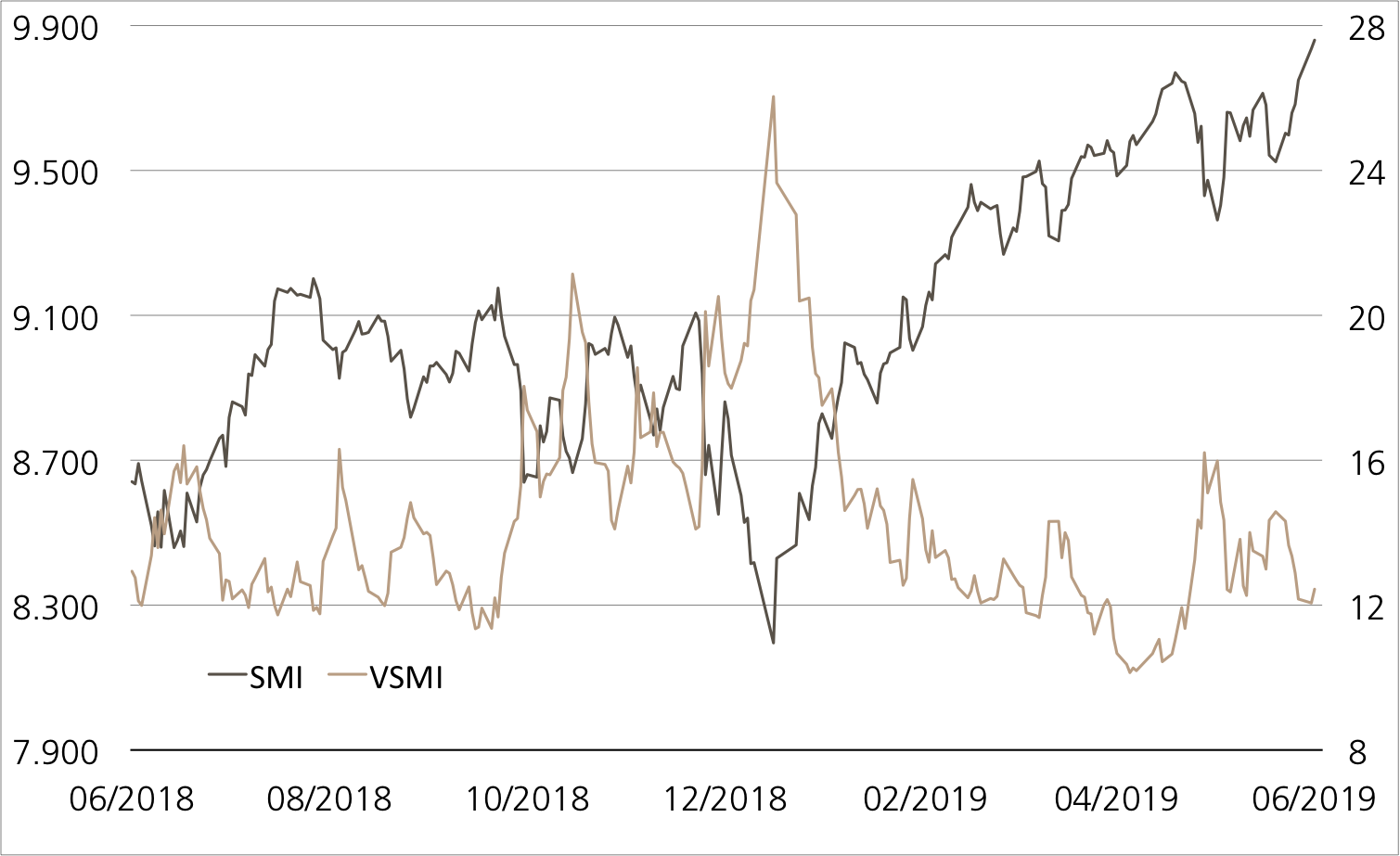
L’index VSMI™ est calculé depuis 2005. Il affiche la volatilité des actions inclus dans le SMI™ index. Pour la calculation, un portefeuille est utilisé qui ne réagit qu’au variations de la volatilité au lieu des variations des prix. En le faisant, la méthodologie du VSMI™ utilise la volatilité carré, connu sous le terme variance, des options sur le SMI avec 30 jours jusqu’à l’échéance négociées à la Bourse Eurex.
Source: UBS AG, Bloomberg
Valeurs du: 12.06.2019
Facebook / Twitter
Une exploitation sur tous les canaux
Facebook et Twitter sont exposés à un critère permanent des faux comptes, des messages de haine et de la déficience en matière de protection des données. Jusqu’à présent, la pression des défenseurs des consommateurs et des politiciens n’a manifestement pas bloqué le succès opérationnel des groupes de médias sociaux. Au premier trimestre 2019, les deux entreprises ont encore développé le nombre de leurs utilisateurs. En bourse aussi, le duo est apprécié : jusqu’à présent cette année, Facebook et Twitter ont nettement distancié le marché global.¹ Avec le Callable Worst of Kick-In GOAL (symbole : KDSQDU) un rendement de 12.75% p.a. sera même possible si les deux actions s’engagent dans un rythme plus tranquille au cours des deux années à venir. Facebook et Twitter disposent d’une marge de sécurité de 50% chacun.
330 millions d’utilisateurs ont été actifs sur Twitter en base mensuelle au premier trimestre 2019. La communauté s’est ainsi agrandie de neuf millions de membres par rapport à la même période de l’année précédente. La hausse des recettes publicitaires a permis au service de messages de faire progresser son chiffre d’affaires de 18% à 787 millions de dollars US. Pour le deuxième trimestre en cours, Twitter prévoit des recettes entre 770 et 830 millions de dollars. Dans le même temps, le management prévoit une hausse des coûts d’exploitation. On remarque ici la lutte contre les commentaires haineux. (Source : Thomson Reuters, article de presse, 23.04.2019).
Actuellement, Facebook se prépare pour une transaction avec la FTC. L’autorité de surveillance américaine vérifie si l’entreprise a violé une loi sur la protection des données de 2011 en communiquant des données d’utilisateurs. Corrigé des trois milliards de dollars US provisionnés en vue d’une éventuelle amende, le Crésus des médias sociaux a gagné nettement plus au premier trimestre 2019 que prévu. Dans le même temps, le portail a vu progresser le nombre de ses utilisateurs actifs de 8% à désormais 2.4 milliards. (Source : Thomson Reuters, article de presse, 24.04.2019).
Opportunités: L’approche des élections présidentielles en 2020 aux Etats-Unis n’est pas l’argument le moins important pour continuer à donner priorité aux actions des médias sociaux. La durée du nouveau Worst of Kick-In GOAL (symbole : KDSQDU) sur Facebook et Twitter dépasse la date des élections attendues dès à présent avec impatience. D’ici juin 2021, le produit en souscription versera tous les trimestres un coupon d’un montant de 12.75% p.a. Avec un écart de la barrière de 50% chacune, les deux actions entrent dans la période de deux ans. Veuillez observer que l’émetteur dispose d’un droit de résiliation. S’il en fait usage, le nominal avec le coupon au pro rata sera remboursé par anticipation.
Risques: Il n’existe aucune protection du capital pour le produit présenté. Si, pendant la durée, l’un des sous-jacents atteint une seule fois ou passe sous le Kick-In Level (barrière) défini et que la fonction de remboursement ne s’applique pas, le remboursement en espèces à l’échéance est basé sur la performance la plus faible (base Strike) du duo (au maximum toutefois à la valeur nominale majorée du coupon). En pareil cas, des pertes sont probables. De plus, avec des produits structurés, l’investisseur supporte le risque d’émetteur, si bien qu’en cas d’insolvabilité d’UBS SA, le capital investi peut être perdu, indépendamment de l’évolution des sous-jacents.
Vous trouverez davantage de produits UBS et des informations sur les opportunités et les risques à l’adresse ubs.com/keyinvest.
Facebook vs. Twitter
(5 ans, uniquement aux fins d’illustration, indications en %)¹
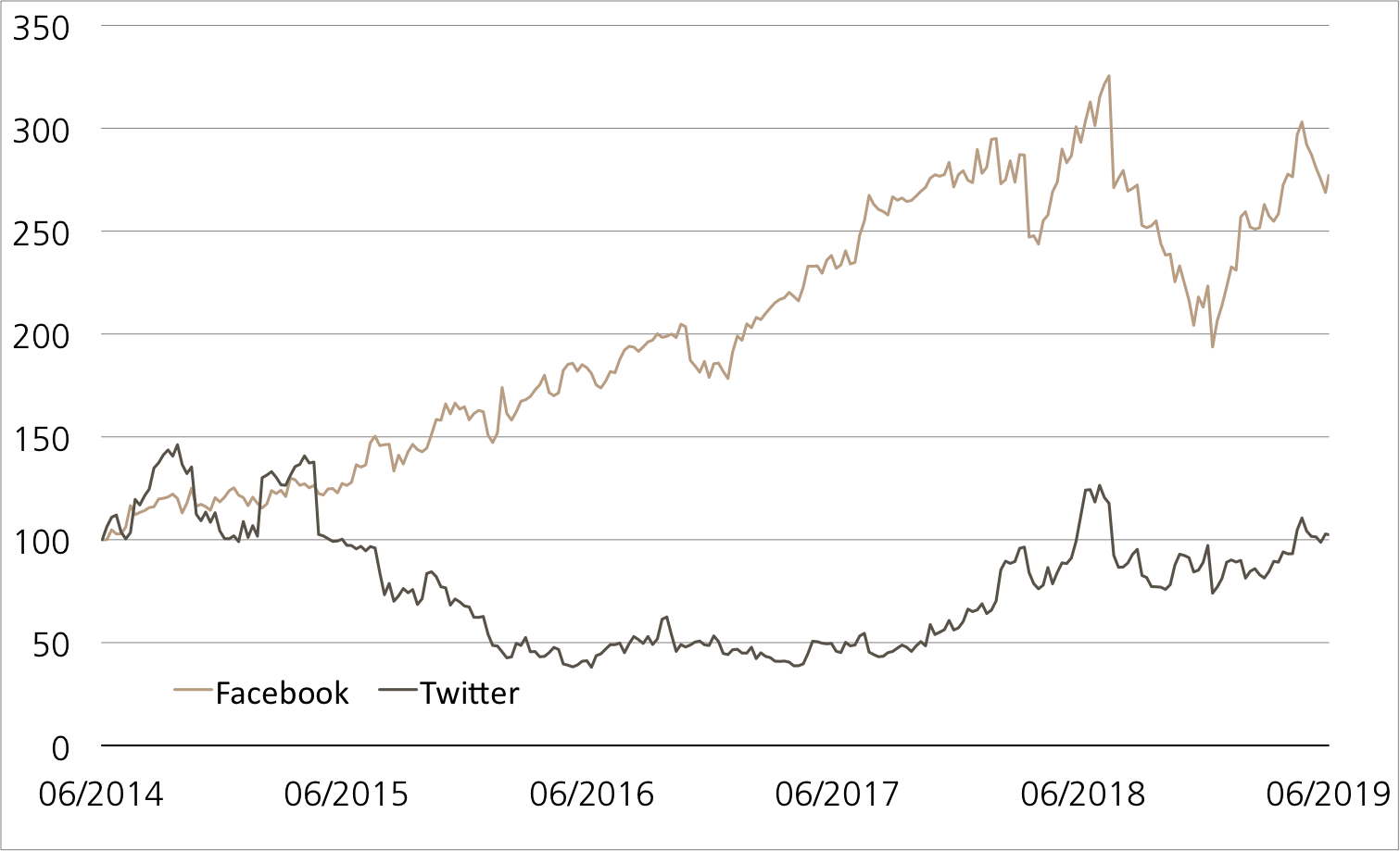
Source: UBS AG, Bloomberg
Valeurs du: 12.06.2019
12.75% p.a. Callable Worst of Kick-In GOAL sur Facebook / Twitter
| Symbol | KDSQDU |
| SVSP Name | Barrier Reverse Convertible |
| SPVSP Code | 1230 (Auto-Callable) |
| Sous-jacent | Facebook / Twitter |
| Devise | USD |
| Coupon | 12.75% p.a. |
| Kick-In Level (Barrière) | 50% |
| Echéance | 21.06.2021 |
| Émetteur | UBS AG, London |
| Date de fixation du prix | 19.06.2019, 15:00 h |
Vous trouverez davantage de produits UBS et des informations sur les opportunités et les risques à l’adresse ubs.com/keyinvest.
Source: UBS AG, Bloomberg
Valeurs du: 12.06.2019
¹) La performance passée n’indique pas les résultats futures.

